#'this detail is very subtle but it really captures some tiny part of the experience of growing up with an abuser'
Text
Yeah sure growing up abused may have left me with permanent scars on my psychological state that I'm still working to unpack, but on the bright side it gave me the ability to give a thoughtful in depth analysis of Roald Dahl's Matilda and all of its adaptations
#rambling#i love matilda so much. its such an important story to me. its literally just an abused childs power fantasy#where she gets to get back at the people who hurt her and protect other kids and then get a new loving family and everything is alright#my gf and i just watched the movie adaptation of the musical and we have Opinions on it. some good and some bad#so weve been discussing it and analyzing different parts of it#and its kinda nice to get to use my history for something good#to be able to give thoughtful analysis on how the changes they made in this adaptation have changed the allegory for abuse in the story#from the perspective of someone who grew up with that#and to just. have that be normal. my gf knows my history and its not gonna stop the conversation if i say#'this change works well for trunchbull's character bc it makes her seem more like a real life abuser'#'this detail is very subtle but it really captures some tiny part of the experience of growing up with an abuser'#'i dont like this bc it detracts from the narrative of the main character feeling alone and makes it less relatable to abused kids'#'i dont like this because while it IS something that happens under abuse it detracts from the fantasy where the kids all win together'#idk. of course everything that happened to me as a kid was awful and should not have happened but like#for a long time i had this problem where i didnt know how i was ever supposed to be okay about that#like no matter how much therapy i go through it will never UN-happen. it will always still have happened and it will always have been awful#and i couldnt figure out how i was supposed to recover from that besides 'bury it and try your hardest to never ever think about it'#and. i think maybe this is it. yes the abuse i went through was awful. thats kind of the whole thing about abuse#but. its also just a fact of my life. im better NOW. but that will not change what happened then#the abuse was awful. but the fact that i am an abuse survivor is a neutral fact. the same as any other fact from my childhood#its just a fact. a part of my past. and maybe being able to talk about it that way is... good for me#i dont have to break down when i think about it bc im okay now. my partner doesnt need to stop me and express sorrow for me bc im okay now#i can talk about my past in a neutral way and use my life experience to analyze movies#the same way that i used my experience of growing up in arkansas to analyze hollywood hillbillies when we watched it together#theyre both just two facts of my life. and analyzing movies is fun#that woman has no power over me anymore and hasnt for many many years. im okay now#abuse mention#child abuse mention#request to tag
21 notes
·
View notes
Text
Sonic Youth Albums Ranked (Part 3)

6. Sister (1987)
Main Genres: Noise Rock, Alternative Rock, Post-Punk
A decent sampling of: Experimental Rock
This is the first LP in the Sonic Youth discography accessible enough to be labelled a true ‘Alternative Rock’ record. It’s still rough around the edges, but Sister is full of catchy hooks and thrilling guitar sounds. I feel like this record and Daydream Nation probably went on to spawn at least 200 new alternative rock bands by the time the 90s came around (not that I was there to see it or anything, just speculation).
Sister deserves a lot of credit for solidifying on tracks like “Catholic Block” and “Stereo Sanctity” what would become the dominant formula for the band’s sound throughout most of the rest of their discography. I think that's part of the reason why this is Sonic Youth’s second most acclaimed and beloved record. Perhaps some fans would even be downright offended that I only put this at #6 on the list, but trust me when I say that this is only because the band has made so many fantastic records. In fact, for most bands, this would easily be their greatest record.
I can still remember the first time I heard the opening to “Schizophrenia”, I had never heard anything quite like it. The guitars sound upbeat yet worn out and dejected, making me feel isolated and almost spiritually weak when I listen to this track, yet somehow also comforted. The song is partially inspired by Kim’s older brother who has schizophrenia, though the roles are reversed in this song with a brother whose sister is schizophrenic. It’s a deeply fascinating and memorable piece, and I can see why many fans consider this to be a top five Sonic Youth track.
Most of the rest of Sister is very scratchy and punkish with some very tight guitar work, like “Catholic Block” which boasts one of my favourite melodic riffs in the Sonic Youth canon. There’s also “Hot Wire My Heart”, another major highlight and a cover of the obscure British punk band Crime, where Sonic Youth takes their song and upgrades the guitars and drums while also adding a bold wall of feedback at the end.
Then there’s “Pacific Coast Highway”, a completely sickening song and one of Kim’s very finest moments as a lyricist and vocalist. This haunting noise rock jumble tells the story of either a unhinged stranger, or perhaps a resentful ex-lover, who is obsessively catcalling the listener from their car, with the not-so-subtle implication that you’re all by yourself somewhere and that this person intends to harm you. I have no idea if this was written about a personal experience, but I do know from listening to their voices that this is something many women have either gone through or live in perpetual fear of. Seriously fucked up stuff, but also one of Sonic Youth’s very best tracks.
"Cotton Crown” is an odd one out in the Sonic Youth discography; an uncharacteristically sincere but still off-kilter love song that Kim and Thurston sing as a duet. Their voices are a bit out of tune with each other, but i think that honestly fits the Sonic Youth aesthetic and it’s sweet in its own quirky way, although very bittersweet decades later with hindsight about the fate of their relationship. Sort of a noise rock lullaby almost, maybe even with hints of early shoegaze.
Sister does a really good job of taking the seemingly juxtaposing ideas of the ‘fun’ and the ‘grotesque’ and fuses them together. This album is both largely exciting and still somehow alienating and depressive. It’s textbook Sonic Youth, really. I will say that the best tracks are clustered together with a noticeably weaker middle portion, but really this is still a consistently great record throughout. Altogether, Sister is one of the many entries in the band’s discography from 1986 through 1990 where Sonic Youth could basically do no wrong. A classic record.
9/10
highlights: “Pacific Coast Highway”, “Schizophrenia”, ‘Catholic Block”, “Cotton Crown”, “Hot Wire My Heart”, “Beauty Lies in the Eye”

5. A Thousand Leaves (1998)
Main Genres: Noise Rock, Experimental Rock
A decent sampling of: Alternative Rock, Post-Rock, Neo-Psychedelia
I’m just gonna say this now: A Thousand Leaves is by far Sonic Youth’s most underrated record. It’s also the last truly amazing record that the band ever put out. Maybe it’s just the bizarre choice of an album cover that turns people off of this LP. Really, what the hell were they going for here with the minimalist hamster vibes? The beautiful title really suggests something a lot more visually stunning.
In all seriousness though, I feel like nobody talks about this one because it’s overshadowed by its predecessor Washing Machine, but if there’s one area that this record exceeds above all other Sonic Youth LPs, it’s that it perfectly captures that mellow feeling that the later Sonic Youth albums were inclined towards. Not a lot of Sonic Youth records put me at ease like this one does.
Likewise, this is maybe the most ‘feel-good’ record in their discography along with Murray Street. But where Muray Street is something you could put on in the background and enjoy pretty modestly, A Thousand Leaves is a largely experimental, out-of-body experience that pulls you into its surreal, flowery, evergreen world.
“Contre Le Sexism” is a perfect opener for this kind of record; this quiet daze of a waking dream is both dainty and delirious, alluding to Alice in Wonderland with Kim’s vocals never before sounding so gentle and bright. I swear I start to hear a door creak at the end. Maybe that’s the sound of stepping out into the rest of A Thousand Leaves.
What follows immediately after is “Sunday” which is actually one of the band’s poppiest moments, making it somewhat of an outlier on this highly avant-garde and immersive record. But the warm spring vibes of the melody fits right in. The wall of sound introduced during the bridge is a soft mesmerizing bliss more akin to a band like My Bloody Valentine, if not for the tiny distant screeches of atonality whirling around here and there. As a big fan of both bands, I’m all for this kind of sound.
“Wildflower Soul” is easily one of the best things Sonic Youth has ever written. Endless amounts of creativity are poured into this nine minute noise rock acrobatics performance along with a lyrical ode to love, nature, and childhood. The vibes of this one are really quite jaw-dropping given the fact that these are the same guys who wrote “Schizophrenia” and “Death Valley ‘69″. There’s such unison and harmony in the band’s performance here as they switch between different bpm and even time signatures, and the usage of the heavy phaser effect towards the end sounds nothing short of godlike. "Wildflower Soul” almost feels like an entire album experience in one song, and I’m beyond impressed every time I listen to it.
This makes for a hard act to follow, but A Thousand Leaves still has plenty of other highlights. “French Tickler” is a strange and satisfying track that switches back and forth between a playful melody and churning, stretchy distortion. “Karen Koltrane” is a murky but textured portrait of Lee Renaldo’s ex-girlfriend, who got addicted to hallucinogens and became heavily withdrawn from the rest of the world. “Snare, Girl” is a soothing spell where Thurston sounds like he’s trying to coax the listener into a never-ending slumber.
My only real complaint here is “Hits of Sunshine (For Allen Ginsberg)”, a lackadaisical jam session that sounds cool enough, but really overstays its welcome given the lack of development it achieves over its eleven minute run time. It’s a nice piece to vibe to, but it very noticeably disrupts the album’s flow. Take this one track away entirely, or even just edit it down severely, and this would probably be a 10/10 record for me.
Still, wow what a cool album. A Thousand Leaves is a great example of why I respect this band so much. Even this late into their career, Sonic Youth were willing to try so many new bizarre things while also building judiciously upon the foundations of their past work with great attention to detail. I wouldn’t recommend most people start with this one, it’s definitely a bit more challenging especially if you haven’t listened to some other really weird experimental rock records. But once you’re in the right headspace for it, it’s easy to get almost completely lost in A Thousand Leaves.
9/10
highlights: “Wildflower Soul”, “Sunday”, “French Tickler”, “Karen Koltrane”, “Snare, Girl”, “Contre Le Sexism”, “Heather Angel”

4. Goo (1990)
Main Genres: Noise Rock, Alternative Rock
A decent sampling of: Experimental Rock, Post-Punk
Goo was my very first Sonic Youth album, and I can definitely still feel some of the old teenage angst that I had at the time whenever I listen to this one. What probably adds to that feeling is the fact that this along with Daydream Nation is one of the two albums in the band’s discography that I’d say possesses a great deal of immediacy. Albums like Sister and A Thousand Leaves are a bit more subtle and they take a while to be fully digested. But this one, this one hit me like a brick wall.
Between “Tunic (Song For Karen)”, “Kool Thing”, and “Cinderella’s Big Score”, Goo is above all others the Sonic Youth record where Kim Gordon is really the star of the band, featuring not one but three of her most captivating songs. Likewise, I would also say that this is Sonic Youth’s most overtly feminist and socially conscious record.
I don’t know if anybody else feels this way, but to me the opener “Dirty Boots” really does sound like “Teen Age Riot” part 2. That’s not a bad thing of course, Sonic Youth making more songs like “Teen Age Riot” could never be a bad thing, and “Dirty Boots” is definitely one of the highlights of Goo with its massive build up of kinetic energy. That being said, I do have to say that I don’t think any song could do this particular kind of album opener better than “Teen Age Riot” already does it, but I still really do enjoy “Dirty Boots”.
“Tunic (Song For Karen)” is one of Sonic Youth’s most poetic and poignant songs. Kim’s sing-talking voice is even more solemn than usual as she takes on a surreal retelling of the final days of drummer/pop star pioneer Karen Carpenter from her perspective, highlighting the severity of her loneliness and the criminal negligence of many of the people around her who let her succumb to her eating disorder. Set to a backdrop of stark and droning alternative rock, I would say that this is possibly the band’s most depressing moment and certainly one of the biggest statements that they ever made.
A lot of the rest of Goo is actually pretty fun though. “Kool Thing” features Chuck D on guest vocals, and its a funny sarcastic take down of the subjugation of women’s voices in supposedly liberated spaces like the world of rock and hip hop, inspired by the time Kim interviewed L.L. Cool J and attempted to have a political conversation. The song mocks L.L.’s attitude towards women while also poking fun at Kim’s own self-perceived elitism. There’s also “Mote”, a sensational head rush that dissolves into noise rock weird-isms, sorta recreating the feeling of going from buzzed to totally black out.
“Mildred Pierce” is almost a practical joke but I kind of love the hell out of it anyway. A short track with lyrics consisting only of the song’s title, it starts with the band getting into a nice little riff before (without warning) bursting into a hardcore punk cacophony as Thurston screams the name over and over into the listener’s ears. Made me jump the first time I heard it.
And then there’s “Cinderella’s Big Score”. If “Schizophrenia” vaguely hinted at Kim’s estranged relationship with her older brother, then “Cinderella’s Big Score” confronts it dead on. Featuring some of the band’s most totally insane and disfigured guitar work ever, this song sounds harsh and militant, like the dawn of a nuclear cataclysm. It’s very hard to believe that Kim is 37 years old here; she reverts to sounding exactly like a hurt teenage little sister, rebelling against her childhood trauma and lashing out at her brother’s past bullying and now his cold indifference towards her.
The song grapples with some very painful emotions, but the experience is raw and cathartic. “Cinderella’s Big Score” is definitely somewhere in Sonic Youth’s top 10 tracks for me; it just doesn’t get any realer than this. Honestly, the record could’ve ended here. I like “Titanium Expose” enough as a closer, but this would’ve made a really powerful and lasting impression to end the album.
Despite that, Goo is an excellent Sonic Youth record that demonstrates just how much the band had mastered their craft after a decade of making all sorts of noises. Obviously I’m biased since it was my own first Sonic Youth record, but I really do feel like this is the very best place to start with the band. Goo is one of their more melodic and accessible offerings, but it’s also one of their most provocative records and it really captures the essence of Sonic Youth’s identity.
9/10
highlights: “Cinderella’s Big Score”, “Tunic (Song For Karen)”, “Mote”, “Kool Thing”, “Dirty Boots”, ‘Mildred Pierce”

3. EVOL (1986)
Main Genres: Noise Rock, Experimental Rock, Post-Punk
A decent sampling of: No Wave, Alternative Rock
If Bad Moon Rising was bleak and desolate, than EVOL is disturbed, uncanny, and deeply paranoid. Sonic Youth’s third record evokes the feeling of being all alone at midnight on a sketchy highway, complete with mental images of flickering street lights and looming shadowy figures. I mentioned earlier that I have to be in the right mood to enjoy Bad Moon Rising, but this record puts me in the right mood almost instantly whenever I put it on.
EVOL isn’t exactly a no wave album like their first two records. The highly experimental influence is still there, but the arrangements are starting to sound fuller and more intentional.
You could say that this LP marks somewhat of a transitional phase between Sonic Youth the no wave band and Sonic Youth the alternative rock band, and in many respects it has the best of both worlds. There’s a few catchy darker alternative rock songs here and there, sandwiched between tracks that could best be described as ‘mad scientist’ music, which altogether creates a varied and unique album experience.
“Tom Violence“ immediately establishes the tone of EVOL with crooked, scraping flashes of post-punk guitars. This track reminds me of heads hung low, bodies slouched uncomfortably, and the feeling of being completely wide awake at 2:00 am. There’s something very unfriendly that lurks beneath the dissonance of these sounds.
If “Tom Violence” is uneasy, then “Shadow of A Doubt” is an auditory nightmare, managing to capture something akin to the fear of being watched by an unknown stranger hiding in the shadows. Notes are gently plucked like icy cold fingers slowly crawling up the listener’s back while Kim whispers about murder plots and oneirophrenia. The “just a dream” lyrical motif is first uttered reassuringly, but eventually turns into a desperate plea as Kim begins to shout frantically and the music intensifies.
The album dials down the spook factor a few notches with “Starpower” and “In The Kingdom #19″. The former is an early example of Sonic Youth’s ability to combine melodic hooks with meandering chaos that would become refined on the next few LPs, while the latter features Lee’s first solo vocals (and one of his best performances) reciting a lucid, jet black vision of a car accident. Thurston threw firecrackers into the recording studio when they did Lee’s vocals on this track and you can hear it in the recording, and just like “Mildred Pierce” it really caught me off guard the first time I heard it.
“Secret Girl” is the scariest fucking thing in the whole Sonic Youth discography, and also just one of the scariest songs I’ve ever heard. It starts with a deep shuddering thud that sounds like it’s getting closer and closer. Then out of nowhere, a cassette-recording of an old detuned piano starts to play a simple, unnerving refrain while Kim offers a cryptic and uncomfortably suggestive spoken word piece. It feels like a scene that might play out in a horror film, where a television screen comes on by itself and the person on the screen begins to talk directly to the viewer.
Finally, there’s “Expressway To Yr Skull” (alternatively titled “Madonna, Sean, and Me”), which would be my #1 Sonic Youth album closer if not for the #1 album on this list. That being said, this song is still one of the biggest highlights of the band’s career. "Expressway To Yr Skull” starts off restless and spectacular, leading up to an utterly earth-shaking climax, and then it’s as if the song promptly dies, only to become a lingering undead entity that pulls you down with it. I still can’t get over how the ending really manages to sound like it’s dragging you down further and further into its barren depths.
To add to that, there’s actually a locked groove on the original vinyl release of this LP that plays the last little bit of “Expressway To Yr Skull”, meaning that if you let the needle sit there, it will forever loop that last little bit of droning at the end of the track. I really appreciate this little detail; it’s as if the pervasive darkness of EVOL is so encompassing that it could turn into a deep midnight that never ends.
EVOL is honestly so close to being a 10 for me, but just like Sister I find that it is decently weaker towards the middle. Still, I’m absolutely enamored with the atmosphere on this album. No gothic rock record has ever managed to sound so deeply unsettling to my ears like this little experimental record does. You really just have to experience this one for yourself. Honestly, don’t be surprised if in a year or two I’ve changed my mind and bumped this one to a 10.
9/10
highlights: “Expressway To Yr Skull”, “Shadow Of A Doubt”, “Tom Violence”, “Secret Girl”, “In The Kingdom #19″, “Starpower”
#Sonic Youth#EVOL#A Thousand Leaves#Goo#Sister#noise rock#experimental rock#post-punk#no wave#alternative rock#indie rock#album review#music review#album list#list#ranked#Kim Gordon#Thurston Moore#Lee Ranaldo#Steve Shelley#1986#1990#1998#1987
44 notes
·
View notes
Photo





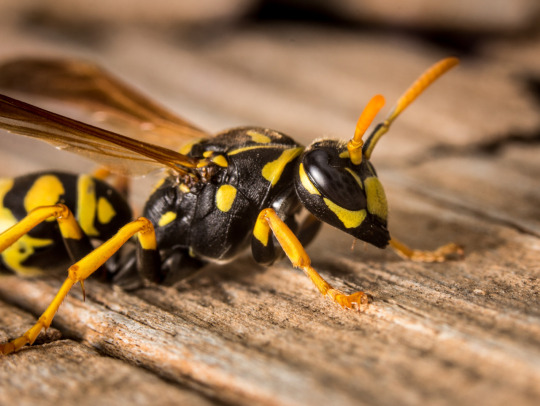




I really really miss photography.

Photography feels like an old friend I’ve lost touch with. It pains me greatly that I just don’t have the energy or stamina to do it anymore. It really filled a creative void after I was unable to create my original comedy posts any longer. My illness keeps taking and taking from me and it is a challenge to find ways to adapt and cope.

The saddest part is that I felt like I was just starting to master photography as an art form. I was at that point where I could instinctively do all of the technical things and concentrate purely on the art. Lighting was becoming intuitive to me instead of a complicated puzzle I had to solve each time.

Yes, I took a lot of photos that I am really proud of. (Which I am spreading throughout this post).

But sometimes I mourn the photos I could have taken if my chronic illness hadn’t worsened.

It’s also hard seeing the new cameras and lights that have been released since I had to stop. I *just* missed a technological revolution. New features that would have allowed me to do more with less energy. To push the boundaries of my creativity. To get shots I could only dream of back then.

Full frame mirrorless cameras have opened up so many creative possibilities. The low light performance, the detail, the dynamic range--it has all been improved greatly in just a few years. But there are also many automated usability features that allow the camera to offload work and concentration from the brain. These new digital wonders can even be used as cinematic quality video cameras--something I would have liked to have explored.

I had to take these match photos in a pitch-black room, with a reversed lens, with no control over my aperture, and a manual flash. It took forever to time it properly because I had a whopping 3 frames per second. It would have been a cinch with a mirrorless camera, with super fast burst modes and an electronic viewfinder. You can see exactly what your image will look like before snapping it. But you can also “see in the dark” using a high ISO preview. Before you had to use a live view mode on the back screen. But on older cameras that mode was clunky and slow and... it just sucked.

Enlarge!

MOAR BIGGER!

Weirdly, one of the biggest advances is due to a shortened “flange distance” where the lens connects to the camera body. It seems like a small thing. Literally only a centimeter or so. But because of the lack of mirror, camera designers are able to move the lens closer to the sensor and design more advanced lenses with incredible sharpness. Combined with increased megapixel counts, that would have been amazing for my macro photos.

Electronic viewfinders take the guesswork out of exposure--even in bright sunlight where screens get washed out from glare. And being able to compose portraits with highly accurate eye-tracking autofocus would have been a tremendous advantage.
No more “focus and recompose.”
No more “Did I get the eye? Let me zoom to 100% on this tiny screen.”
I could have spent more of my concentration getting natural expressions from my subjects and composing my photos without distraction.

And IBIS!
I missed out on motherhecking IBIS!

This photo of my wonderful friend Erin was taken handheld at sunset. The original RAW version was extremely dark--even though I was using a high ISO. I had to do a ton of work to get this to not look like noisy garbage. But there just wasn’t any other way to capture it... UNTIL NOW.
IBIS (eye-bus/👀-🚌) or “in-body image stabilization,” allows the camera sensor to kind of... float. You can eliminate camera shake caused by the subtle micro-movements when handholding.
How do I explain it? Ummmm...
It turns the sensor into a chicken head.
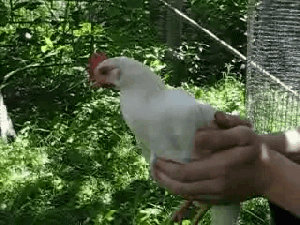
So instead of increasing the ISO (which is like a volume knob for light which gets grainier as you crank it), you can lower your shutter speed. In the past, depending on the lens, 1/60th of a second was about as slow as you could set it. With IBIS, as long as the scene you are capturing is relatively still, you can take photos in very low light without a tripod. This is great because tripods are a pain in the ass and you can’t always have one handy. Plus, you can combine an IBIS camera with a stabilized lens to get a de-blurrification multiplier. Then you can get sharp handheld photos that are technically considered long exposure. I’ve heard people say they got sharp photos exposing at several seconds. Literally going from a fraction of a second to 2 goddamn Missisisppi. I can’t even quantify how many fantastic photos are being taken right now that would have been unusable blurry messes a few years ago. We get to enjoy these photos all because they installed a chicken head inside cameras.
AND DARN IT ALL TO HECK I HECKING MISSED IT, GOSH HECKING DANG IT!.
Sorry... didn’t mean to curse like a sailor that stubbed his toe while stepping on a Lego.

I think I’ll have a cool refreshing root beer to calm my IBIS envy.

(Those water droplets are a total fraud, by the way. It’s fake blood without the red added.)

And with the progress in battery and wireless technology, artificial lighting has become lighter and more portable while still being powerful enough to compete with the sun. I could have used strobe lights in my little studio, packed them up into a small case, and gone to the middle of the field to use them there.

Yes, I was able to convert my old studio lights to be “portable-ish” but we had to lug so much equipment to accomplish this photo of Brittany in the red dress. The battery pack alone weighed as much as one modern light. I was stuck in bed for a week afterward from all of the carrying of heavy gear.
Before that, this was my hacked together “outdoor” light. The Flash-O-Tron 3000. It looks cool but it was delicate and hard to get through doorways.

After charging 12 AA batteries overnight, I had to drag this contraption outside at the buttcrack of dawn to get my favorite photo of Otis.

I had to use a handheld mirror to reflect my popup flash in the direction of the Flash-O-Tron 3000 to trigger it. It worked about 25% of the time. Oh, and I was laying on cold wet grass, manually tracking Otis--who refused to sit still. I had to line up a single autofocus point on his head for every snap. The concentration required felt like my brain was juggling chainsaws.
But guess what they invented last year?
PET. EYE. AUTOFOCUS.
ARE YOU KIDDING ME?
A little robot inside the camera is all, “Hey, that’s your dog’s eye!” and just follows it no matter where your pup moves.
I NEEDED THAT SO BAD!
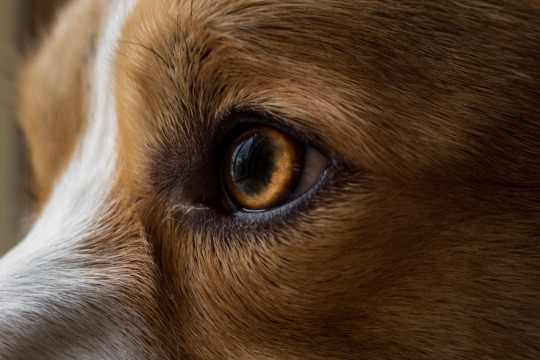
This shot took 10 minutes of me trying to lock onto his eye with a macro lens. The depth of field at that distance was the width of his eye and, again, he does not sit still.
I want a time machine so I can go back and retake every blurry Otis photo.

Also, many of the modern strobes have NO WIRES. You just stick a thing on top of your camera and you can set off lights several football fields away. My photo studio has tons of wires routed in the ceiling and coming out of the walls.

[Hi-Res Version]
And then those wires all go into a weird analog remote with old school sliders that controlled the power of the flashes. But the sliders were difficult to finely adjust.

Now you can load an app on your phone and adjust the flash power digitally and adjust the brightness in 10% increments. You can save lighting ratios and recall them instantly. And you can preview your work with high powered LED modeling lights so you don’t have to take 50 test shots.
No more nudging a light and taking a picture.
Raising the power and taking a picture.
Swapping out a modifier and taking a picture.
Back and forth, back and forth.
Essentially, what you see is what you get, so setting up lighting takes a fraction of the time and effort with these new lights and cameras. That would have been so helpful with my disability.

Oh... the lights are less expensive too.

The future of camera tech looks exciting as well. I think the computational photography that is in the latest smartphones will soon be added to more professional cameras. That is going to make high-end photography so much more accessible to anyone who wants to try it as a hobby. The learning curve will flatten further, and as long as you are creative, you will be able to take beautiful, high-quality photos.


Some might say that not having all of the new tech helped me gain important experience, expertise, and problem-solving skills. Some believe the inconveniences are a photographer’s trial by fire. The struggle makes the art more authentic. And since I learned how to do it the hard way, my journey is more valid than some photography influencer on Instagram with an iPhone.
To that I say... BULLLLLSHEEIIIT.
Those inconveniences just made me SUPER DUPER TIRED.
And some of those influencers take really kickass photos. Not all of them are butts either.

I love photography but there is a reason I had to stop. Like anything, doing it well was a lot of work. I always ended up having to quit taking photos much sooner than I wanted. I had to scale back my ambition to fit my energy requirements. I could only do photography on days when my body was cooperating fully. I had to cancel many photoshoots because the preparation was just too much to handle. And after my bigger projects it took me forever to recover.
GIVE ME ALL THE CONVENIENCES PLEASE.

That “you have to struggle” attitude is no-good-gatekeepy-ableist crap.

Old photographer grumps are upset because they spent years learning how to focus manually on horseback and use the sunny 16 rule and develop film in a converted shed they built by hand and now “those darn kids” can use an iPhone on a skateboard while doing a kickflip with their eyes closed and still pull focus.

However, despite there being a lower barrier for entry, the technological improvements add new complications to the advanced side of things. So you can make photography as difficult as you desire if you are willing to learn new stuff. Which old school photo grumps are notoriously averse to.

This new tech has all kinds of novel things to discover and figure out. There is drone photography. There is advanced macro photography using robotic focusing rails and ever-improving focus stacking software. You can now network more lights together than ever before. Karl Taylor did a photoshoot with 12 lights! (Captain Picard would totally lose his shit.) Long lasting batteries and computerized sliders have created new timelapse possibilities. Stabilization software allows complex hyperlapse videos. Better low light performance and sharper lenses with big apertures combined with stacking or star trail software has improved astrophotography. Advances in material science have allowed darker and darker high quality neutral density filters for extreme long exposure photos. New focus tracking algorithms have allowed for wildlife photography that was never possible before. You can capture fast-moving birds in the sky from farther away and still get amazing detail. Faster burst modes allow people to capture split-second action. Never miss a good header at your kid's soccer games. (Is that a thing? I have no kids and don’t remember how to soccer.) IBIS allows photography without a tripod. So now people can trek to harder to reach areas, AT NIGHT, and take sharp photos with little noise. Increased dynamic range and new HDR displays will allow photographers to take images of lights and capture their actual intensity. What if the lights in photos could glow like they do in real life? Think about a neon sign at night in the rain reflecting in a puddle. That would look so neat.

Not to mention learning how to process photos in editing software is an entirely separate and challenging skillset you can master. There are thousands of techniques you can learn to elevate your images. Dodging & burning, frequency seperation, and compositing, oh my! Programs like Lightroom and Photoshop are constantly updated with new features that expand possibilities.
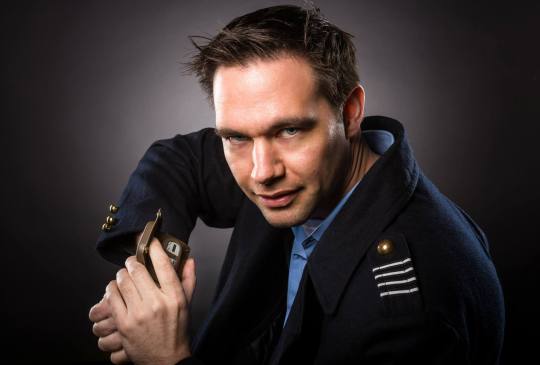
None of that is easy. It will all require diligent study and practice to master. Technical skills will always be an aspect of photography that anyone can pursue. But not everyone will need as much technical skill to start having fun and create art.

And much to the chagrin of those grumps... phones are perfectly viable to create that art and they will keep getting better.

You might find it odd that this love letter and goodbye to photography has so much talk of technical gadgetry. But, for me, it isn’t out of place in this sentimental essay. Technology was my first love. My parents bought me a 66mhz Packard Bell computer when I was 12 and technology was the first thing I was ever good at. I learned every function of that machine. I would sometimes break it just so I could learn how to fix it. I took it apart and put it back together. It was my first true obsessive hobby. I found my creativity soon after, and I immediately used that technology to help me create art. I wrote comedy. I learned how to digitally paint. I recorded music. And eventually I found photography. It was the perfect marriage of technology and art. I could nerd out as much as I want while still getting my creative fix.

So yeah... I miss it all.

I miss all of the technical nerdery.
I miss trying out new gadgets.
I miss editing the photos I’ve taken.
I miss taking pictures of my beautiful friends.
I miss taking pictures of weird products.
I miss asking Delling to call apiaries to find me freshly dead bees so I can take macro shots of their fuzzy little torsos.
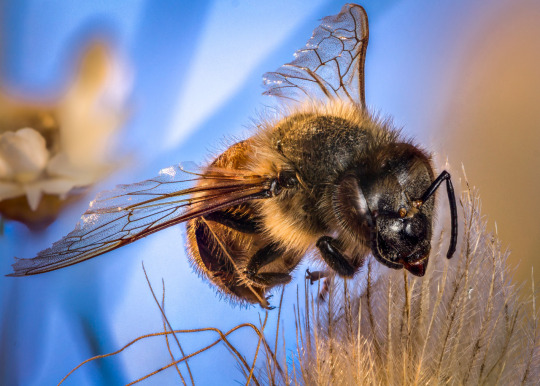
I really hope some day I find a treatment that gives me enough energy to take photos again.

Thankfully my writing helps me feel creative and productive and fulfilled. And it’s something I can do even if I’m not able to get out of bed. And I am grateful I have so many awesome people that actually want to read what I have to say.

So thanks to everyone for that.

I always find a way to move forward. That’s just the nature of surviving chronic illness. But glancing back at what I lost is a pain I never quite get used to.

Though, writing this has helped.
Looking back at all that I accomplished has helped.
And I do feel lucky I was able to accomplish what I did--even if missing it makes me sad sometimes.

3 notes
·
View notes
Text
What Would Success for New Search Engines Look Like?

Since the early 2000s, Google has been the most popularly used search engine across the world. Over this period, from being just another typical Silicon Valley startup and longshot to becoming the protector of the internet, controlling algorithms with enormous business implications and building a reputation for spreading its business into various areas in the name of offering an improved user experience.
In recent times, the increased inspection over its business practices has resulted in government regulators getting tough on anticipated wrongdoings, and a fraction of users have also demonstrated a little inclination towards a more privacy-oriented search experience. Google is also facing opposition from other search engines regarding how it is presenting search engine alternatives to Android users in Europe.
This wave of opposition to the market leader may develop favorable conditions for other search engines to contend themselves. New search engines, Neeva, founded by the former Senior Vice President of Google Ads, and You.com, founded by Richard Socher, former Chief at Salesforce, have been announced this year. While snatching away a considerable fraction of search market share from Google may be a part of their overall objective, becoming successful as a new search engine is subject to a lot of factors and may occur in a subtle form.
REGULATORS WANT TO SEE MORE COMPETITION IN SEARCH
In the past several years, Google has been facing increased inspection over its alleged anti-competitive practices in different parts of the world. Back in 2018, the European Commission hit Google with the largest antitrust fine ever of roughly $5 billion. And just a year before, the EC had penalized Google with a $2.7 billion fine for favoring its own content in the SERPs.
But this is not it. It is alleged that Google is using its contracts and market power to neutralize the competitors, and the Department of Justice has filed an antitrust lawsuit against the search engine giant for the same at the federal level.
However, if it is found that Google did engage in anti-competitive strategies, then the question moves on to solutions.
The House Judiciary Subcommittee on Antitrust issued a lengthy report recommending various potential solutions, including “structural separation” in an attempt to re-establish competition. However, the company is projecting confidence and might take the dispute to court.
In case that happens, it will still take at least two years before any initial judgment comes out, and even after that, Google may pursue an appeal. Nevertheless, with the investigation over the company’s superior position in the market, reaching a turning point, potential competitors have eventually begun emerging from the thicket and trying to stand out from the market leader.
CAN ANYONE REALLY COMPETE WITH GOOGLE?
Considering the position that Google occupies in the market today, the number of users it boasts, and how it has established itself as a crucial part of our everyday lives, it seems a bit irrational. Honestly speaking, developing a search engine that could really go head-to-head with the search engine giant itself would mean that it should at the very least offer the same experience to the users, i.e., relevant, fast, handy, and cognitively low load search results. And let’s suppose the rival search engine actually manages to offer as good an experience as Google, it would also need to get those billions of users to trust them rapidly who today wildly favor Google. But the latter seems more plausible considering how Google is shifting from being the beloved startup to becoming the evil empire over the last couple of years.
Besides, building a search engine that can compete with Google is impossible without having access to the kind of data they do. They know what users clicked, liked, or disliked, what they found most relevant to what queries, and so on. Users turn to search engines for queries, and Google, over all these years, has gathered an enormous amount of data like no other. In addition to all this, the quality of search results matters too. And it would take years for a new search engine to be able to accumulate that kind of data.
Despite the bar being so high, these two search engines (Neeva and You.com) still believe that there are some areas of opportunities that Google hasn’t tapped into yet. In fact, they have already attracted investment towards that cause too. While undoubtedly it is a good thing, it is highly improbable to level the playing field with funding. Because let’s be honest here, even with Microsoft’s immense resources, Bing mostly failed to win over users or digital marketers from Google.
CATCHING GOOGLE DOES NOT HAVE TO BE THE GOAL
Rather than focusing on creating a search engine that could go head-to-head with Google, the goal could be to develop a powerful team of users who are interested in creating their own corner of the web. Moreover, this strategy won’t require the search engine to gather billions of users like Google in order to become successful.
The search engine DuckDuckGo uses a similar strategy to stand apart from the others and appeal to the user group who wants more privacy online. In fact, DuckDuckGo observed an all-time high number of monthly search queries, which was almost 2.4 billion last month. However, it is still far behind Google, which boasts more than 3.5 billion search queries per day.
Neeva will be offering a subscription-based service, which, according to reports, will cost less than $10 every month after its launch. The search engine strives to offer a personalized yet ad-free search experience to its users. There are chances that it may not need to overcome a lot of technological obstacles since it will be leveraging the existing data sources (such as Bing search results, Apple Maps, and weather.com) and content. This might help Neeva save a lot on its development budget while starting out. If the company successfully manages to captivate enough subscribers, it plans to reduce its monthly charges, making it an even more appealing alternative search engine for users.
On the other hand, the newly introduced search engine You.com hasn’t announced the exact details yet, but its website hints that it would help users with their buying decisions. Moreover, its early access survey also asks users several questions relevant to eCommerce.
While we don’t have enough information about it yet, if You.com plans to become an eCommerce player, it will have to go head-to-head with the eCommerce giant Amazon. Competing with Amazon is again a big challenge – from the scale of operators, particularly on the shipping and delivery side, to captivating enough investment to endure the continuous price wars that Amazon would happily engage in.
However, distinguishing itself in the eCommerce sector is still a more realistic path. There are still some features that You.com could introduce just like other eCommerce sites such as eBay, Etsy, etc. have managed to build a unique identity for themselves in their niches.

WHAT SUCCESS MAY LOOK LIKE FOR NEW SEARCH ENGINES?
The growth of the potential Google or Amazon competitors, in the long run, will, to some extent, rely on how successfully they are able to capture a substantial audience initially. It is hard to predict anything as of now since neither Neeva nor You.com have revealed more details or any expected launch date.
While their ‘secret ingredient’ as they revealed, is recognizing those audiences with specific needs that the search engine giant itself has failed to address yet seems like a good start, they shouldn’t have revealed it so early, at least until their launch. This might backfire. There are good chances that the users will continue using Google like they usually do, but use Neeva or You.com for particular purposes. But if the companies are able to retain the same level of focus, they could have a chance at becoming successful.
CONCLUSION – THE POTENTIAL EFFECT ON GOOGLE
With more feasible competitors coming into existence, the users and marketers will have more options, but this might also somewhat impact Google’s own strategy. Google may be compelled to react by catering more to users and SEO professionals’ preferences, which might ultimately upgrade the landscape for everybody.
With the rise of competitors, specific innovations may spark new innovations or implementations by Google. The impact on Google is unlikely to become visible anytime soon, considering that even a large extent of success for the competitors would still mean tiny numbers for Google.
While Google has never actually had a real rival before, they took some pretty sloppy measures when they anticipated one (in Facebook) like launching the social media platform Google Plus which has now vanished. So, as of now, we can only hope that something like that would happen again, which will finally set off an actual search market rather than just a monopoly.
Hariom Balhara is an inventive person who has been doing intensive research in particular topics and writing blogs and articles for Tireless IT Services. Tireless IT Services is a Digital Marketing, SEO, SMO, PPC, and Web Development company that comes with massive experiences. We specialize in digital marketing, Web Designing and development, graphic design, and a lot more.
SOURCE : What Would Success for New Search Engines Look Like?
1 note
·
View note
Text
An Analysis #1: ‘Spring Day’ by 방탄소년단 (BTS)
5 notes
·
View notes
Text
Kayak- Travel App
I have always been enjoying Kayak’s user experience since I have used it in 2011 or 2012. It is founded in 2004 by Steve Hafner and Pual English. So it has 14 years of history in the travel search industry as a company. Clearly, Kayak has gone through several version of redesign on it’s UI and UX and the current one is the most pleasant one that's catching at the same time user-friendly too.
I happen to find some UI versions of it’s Flight Search page on the internet and here are the main changes I captured through the 4 different redesign. Basically, Version 2 is an update of Version 1, Version 4 is an update of version 3. There’s a huge rebranding or UI changing efforts between version 2 and version 3 and we can clearly see the difference it makes.

Version 1: The overall design is quite visual with all the icons used in the App. But the tone of the app is really dark and heavy. Not only do all the icons used dark grey, but all the tabs, banners are consistent with such dark theme. Due to the IOS style guide around that time, the gradient and button effects is pretty heavy too. It’s definitely a visual distraction that kinda forces the user to notice the dominating button and tap on it. Though there is a size hierarchy amongst all typeface, the overall tone/color is hard and in front of my eyes.

Version 2: The updates are quite obvious based on version 1. The color and tone on version 2 are much brighter and lighter. The icons for each category reduced it’s weight and feel much subtle in its communication. The heaviness and gradient have disappeared in this version which brought much-delighted feeling through the screens. However, the overall contrast is too sharp and is not well balanced on the current design. For example, the top Nav bar is black while the rest of the page are the white background. The typeface choice also plays a role and so far there is not grey level on any of the font color yet. So that kinda of the sharp contrast between typeface and the background can also take away a lot of visual attention.

Version 3: This is a breakthrough for Kayak’s design brand. Looks like not only did the UI changed, the overall tone, style, and logo even get rebranded. It is clear that there’s a big creative team building a great guideline for Kayak’s new look and design. This version is very close to the current design with only subtle differences in icon treatment and type color. A great change that’s so obvious is the search flight pages become 2 separate screens rather than 3. Maybe there is data showing that mobile users mainly used “Hotel” “Flights” and “Cars” so they get rid of many other categories and only kept these 3. Even for the web version the have 2 extra category on the search bar- “Packages" and “Cruises”. So they have totally re-think about the mobile experience being simple and focus. Another change is they added the bottom 4 tab bars. A lot of the options like “My Trips” and “Flight Tracker (Watch List)” has become tab bars instead of on the same level of “Hotel” “Flights” and “Cars”. This is a right move, since “many items from “Hotel” “Flights” and “Cars” can become part of “My Trips” and “Flight Tracker (Watch List)”. So one is a child, while the other supposed to be parents- they are on a totally different level.

Version 4: The updates I can see from version three is:
Icons for “Hotel” “Flights” and “Cars”, and Icons on the tab bar: they choose solid and relatively sophisticated shape rather lines and simple shape.
Details on search area: They get rid of the icon, city, and states for both airports. I am assuming that they found out that users are very clear where these airports are if they searched for it. So there’s not a necessity to display that info, which can add visual complexity. They also reduced the brother for the convert button which reduced its visual attention from the screen. I like the new design better since our eyes are less focused on the proximity gaps these white squares creates. Also, they used a lighter grey and smaller font on the info below dates and traveler.
Reduce content and dividing lines: On the flight detail page, they get rid of the operation info and bookmark icon. Also, there are no more lines separating the price and flight time (and airline). It does look much clearer and visually more focused due to the white space.
These are great changes on UI and I can see the overall trend from different versions of IOS and we are moving toward a much delightful, user-friendly, and future (gradient) style. I am excited about the direction the overall UI is going.
Based on the current version 4 UI. I also want to share some learnings on UX from Kayak’s mobile App.
The focus is key: whatever is going to design as a designer, we have to remember what’s the user’s goal coming to our site/app. The more we can reduce the process/steps and hassles to help them achieve their goal, the easier they will feel for the experience. Coming to Kayak’s App, the first place I land is Flight under Search, that’s what they are known for and will be my primary task I want to accomplish here too.

Break the tradition is OK: The most eye-catching change on the search page is the square arrow button. I have never seen such square button anywhere from other Apps. Usually, it’s a long rectangle button extend across to the edge of the phone so overall it looked balanced. However, in that case, the long button cannot be too tall otherwise it’s grabbing too much attention on the page. Instead, the square arrow button is taller than a regular button that you will never miss tapping on it. The interesting thing is, when I use my phone with one hand, that button location is exactly my thumb land without any efforts moving around. It’s definitely one of the easiest buttons that I can click on.
An immersive experience is important: Both on single flight detail page and the “my trip page”, I can see the designer is focusing or creating an immersive experience. On a specific flight page, only did all the tab bar, control bar is gone, the < Back button is replaced by X cancel so the user knows they are not in the Kayak control system, but focusing on looking at something quite important in the undistracted space.Under my Trips, the overall image across the width of the phone and providing immersive experience on the city photo really creates a feeling of personal accomplished trips (photos from the trips) rather than system captured my activities….
Transition and animation can add smoothness: Either transition between pages or after tapping on some buttons. The feeling that animation can bring to a user is that this App is live, fun and active. Tiny movement on expanding, loading and switching can also give a user visual joy. Instead of a machine that’s helping me accomplishing certain goals, the user can feel that they are communicating with a fun, active and personalized character.
That’s a lot of comments just based on Kayak’s app. I enjoyed seeing their changes over the years and really made me think a lot of the trend and styles in UX/UI field too. I will give this App 4.6 out of 5. :)
1 note
·
View note
Text

NON-ROLEPLAYING BLOGS/PERSONALS PLEASE DO NOT REBLOG; .
NOTE: none of this is to be taken as canon unless it's annotated from canon. this is simply PERSONAL interpretation for the sake of character building/exploration/etc. for this roleplaying blog. you are still free to have your own opinions and such, this is just my take and not enforced as canon! thanks!!
this is long, get some popcorn. i have a lot of feelings.
As a preface; When Sliske had his falling out with Icthlarin, it's well known that they came to odds due to the Menaphite God of Death and Afterlife having a rather heavy dislike for Sliske's methods of fighting and his handling of necromancy/wight-taking. Icthlarin removed Sliske's army of wights by force when he refused to allow their souls to move on to an afterlife, which was interfering with Icthlarin's job as a deity.
After that, seething anger well hidden under his always complacent behavior, Sliske spitefully sought out the very enemy they had been at odds with when enlisted from Freneskæ to fight for the Menephites as their 'Stern Judges' or 'Faceless Ones'. Was it petty? Hell yes. Either way, Sliske was able to convince almost all of the Mahjarrat faction from one side into the open arms of previous ‘enemy’, Zaros, probably under the pretenses that Icthlarin and his 'family' had no insight to Mahjarrat culture and that they eventually would have grown bored had the war been ended, seeing as they are used to a constant state of warfare and were promised to be able to fight away from their home realm. Zaros had an understanding of the Mahjarrat due to similar creation, both coming directly from Mother Mah.
Due to their power, Mahjarrat were obviously placed in statuses and titles of high power, a long list of Legatus, Pontifex, Tribune, etc; placement within many sections of the church, military, and more. Where did 'unusual predilections' such as Sliske go? For his ‘liberation’ of the Mahjarrats unto Zaros, a unique branch, the Praetorians, was created. He was given the title, Praefectus Praetorio, roughly Head of the Secret Police. Most Zarosian titles ( and most of the Empire tbh ) were parallel to Roman military and stature ( Infernus is also legit Straight Up Latin™ ).
In Roman titular services, the Praetorians were usually in charge of civil judgments, upholding law, and handling any traitorous actions. They were an imperial guard who delivered security details to the Emporer as well as providing protection. It's also to be stated that the ruler at the time could also be at the mercy of this elite faction ( which uh, lol, is ironic later considering the history of the Zarosian faction and that Sliske probably had a habit of keeping plenty of information to himself and out of the rest of his faction and Zaros. You cannot convince me that Sliske, not the other Praetorians, just him, didn't know about Zamorak's planned betrayal. There's no way he didn't and couldn't have intervened. At least that's how I see it. Fucker was everywhere. ) In real Roman history, it was really not unheard of for the Praetorian Guard to abuse their power by under the table operating assassinations for the right price and several coupes against their Emporers. Yeah, they were pretty unstable for a faction who is supposed to be upholding the law and practicing civil/political infrastructure. I'm no Roman history whiz so any of the above could be pretty shaky/incorrect.
What is the role of the Praetorians?
Sliske: We are the secret police in Senntisten, you work 'with' us on a daily basis! Although I cannot understand why for the life of me. It is not like we need two sets of secret police when the Praetorians are already doing such a commendable job. Oh, so sorry, I appear to be ranting. Any more silly questions, inquisitor?
Kharshai: Thank you for the sarcastic answer, but I was talking about your role in proceedings today.
Sliske: Our 'role in proceedings' is to provide vital reports on potential threats. Plots, traitors, you know...that sort of thing. And if needed, we have our own methods for extracting information from suspects. I must admit, that is the part where I really come into my own.
Kharshai: Hopefully you will not get the chance.
Did the Praetorians know about this ( the eventual usurping of Zaros ) already?
Sliske: Of course we did. Everyone is gathered here because of the intelligence WE gathered. I act on the authority of Zaros himself.
Kharshai: He must place a lot of trust in you to act so strongly on your advice.
Sliske: It can be oh so stressful ruling an empire. Busy work, you see, even for a god. Zaros relies on me and my Praetorians as his eyes and ears in Senntisten. I know, I know, I am such a charming individual, but I assure you the evidence is quite compelling in this case.
During his time, he abused his power fairly often for his own intellectual interests ( having members of a bar fight arrested or executed on the spot while pursuing personal missions ) or his own entertainment. Clarifications on entertainment? Sliske was a playwright of the Shakespearian level for the rich and high status, where he took "unwanted humans from the streets of the city, dressed them in brightly colored costumes, and placed upon each a crude wooden mask. At his command the masks spoke aloud and controlled the movements of the players, compelling them to jerkily act and dance and mime his play like puppets, with the person behind the mask able only to watch his own actions." Yikes, if that wasn't enough to make your skin crawl, often these 'actors' in the climax would fight and kill one another with no control of their bodies, one dying and continuing to move and speak posthumously.
Back to fiction, headcanon, and my interpretation cloud nine all below, Sliske was indeed the leader of his own branch and it goes to say that most of those under him had a similar mindset, such as his second in command, Trindine. Sliske and his underlings were in charge of handling treason, criminal acts, and inquisitions for information on their enemies/other gods and their followers at the time. It's also canonly assumed that the Praetorians were in charge of prisoners as well as information extortion and torture. Sliske has hinted that he enjoys interrogation and a Mod once stated that he found delight in persecuting vampyres due to their ability to remain alive in custody for months or even years.
Sliske had an office, probably oddly occupied from time to time considering his line of work and often absence. He abhorred having to do reports and paperwork ( "Let's just say I'm not looking forward to having to 'file reports' again." ) and made attempts to place this on his cohorts, even though eventually he would have to be the one to sign off on everything as Praefectus. He hated it either way and shirked this responsibility.....out of 'monotony'.
As elite spies, Praetorians were required to hold a resolve and keep their wits under the pretenses they were captured, albeit it was usually the other way around considering their prowess. Sliske was an adamant fan of being able to test the resolve of his own underlings for the sake of torture and interrogation resistance via kidnapping them himself with the possible aid of another of their own; even candidates for the Praetorian Guard were able to find themselves swept out from under their feet in the dark for their first test. Imagine being a member of the guard on a mission and purposely dragged against your will into a gruesome event of capture by the supposed enemy and to be able to not PANIC, understand what is going to happen because you've done this before, and know what to expect. Only for your captor to give up halfway through, grin and tell you 'congratulations, you lasted two minutes longer than the last.'
Nothing was sacred and everything was applicable, extreme heat and cold environments, pharmaceutical torture, infliction of mental and physical stressors and pain, electric and magical shock, good ol' beatings, and degradation. He too was submitted to this kind of routine on his own open armed suggestion, but it never really happened to work on him ( let alone none of his proteges stepped up to the plate under the subtle realization that afterward 'boss' might not treat you so kindly, no one wants a double dose of already given sugar venom from him. Not to mention he's already probably sadomasochistic.) When you're one the undercover agents of one of the most ancient and feared empires you’re expected a lot.
'no one simply withstands torture, it's just a matter of how long it takes for one to crack. you will experience familiarity and boredom with our methods to better yourself in that situation. learn to cope. there will be no loose lips here'.
all that aside. sliske did get attatched to many of his praetors and would often mourn in private if he lost a particularly good officer. the praetorians weren’t all pranks and fear. they were an effective and efficient branch under his guidance.
Tiny, canon last note to help you sleep at night: most of the Empire outright feared the Praetorian Guard when Sliske abused his power for fear of coming under their inquisition or public disgrace when it came to frowning upon their actions.
And p.s. the irony of Sliske being ousted for treason when it was his job to handle treasonous behavior as number one of the secret police never ceases to tickle me pink.
#➤ ɪ ᴀssᴜʀᴇ ʏᴏᴜ ᴛʜᴇ evidence ɪs ϙᴜɪᴛᴇ ᴄᴏᴍᴘᴇʟʟɪɴɢ ɪɴ ᴛʜɪs ᴄᴀsᴇ.│headcanons and theories#tfw you write like 1.5k on ur phone#and it sits there for 3 months#and boy oh boy#hardly anyone in the rpc knows rs but idc#➤ ɪᴛ’s sᴏ ᴇᴀsʏ ᴛᴏ ᴛᴇʟʟ ᴘᴇᴏᴘʟᴇ ᴡʜᴀᴛ ᴛʜᴇʏ want ᴛᴏ ʜᴇᴀʀ. │queue#✦ │ 𝙷𝙴𝙰𝙳𝙲𝙰𝙽𝙾𝙽𝚂 & 𝚃𝙷𝙴𝙾𝚁𝙸𝙴𝚂 ––– i do hate parting with information.
9 notes
·
View notes
Text
Fail of the Lich King
by Wardog
Tuesday, 14 July 2009Wardog critical hits Arthas: Rise of the Lich King, the World of Warcraft tie in novel, for 4000 points of damage.Uh-oh! This is in the Axis of Awful...~
Here’s a confession, Ferretbrain readers: I’ve never read a tie-in novel. Truthfully, I have enough trouble getting invested in the world in original fiction, so there’s a pretty low likelihood of me wanting to read about a universe specifically designed to have movies or games or a tv show happening in it.
I do, however, play World of Warcraft.

And I am, secretly, a bit of a Warcraft loregeek – having played Orcs Versus Humans, and Warcraft II and Warcraft IIIback in the day, despite being abysmal at RTS games. Azeroth is basically Generic Fantasy Setting#3 but having been splashing about it in since the age of eleven, what can I say, I have a fondness. For anyone who doesn’t give a toss (i.e. the rest of you) lore has kicked off in a big way recently in WoW, with the release of the expansion Wrath of the Lich King. This is a big deal.
Arthas, Rise of the Lich King, a WoW tie-in novel by Christie Golden, is the history of that big deal.
The short version: There’s this Lich King, right? He’s wrathful. He needs to taken out by a bunch of PCs.
The longer version: I’m not going to go into the history of Azeroth, which has a long and detailed history. Arthas, later to become part of the entity known of the Lich King (like, whoops), was the son of King Terenas Menethil, ruler of Lordaeron, and a paladin of the Order of the Silver Hand. An impetuous but basically okay youth, hope of his people yadda yadda yadda, he boned the only girl in the entire Warcraft universe, Jaina Proudmoore, for a bit and then went off to do, err, war things.
It’s all a bit complicated and involves a plague of undeath caused by infected grain, evil wizards, demons and Arthas going off the deep end, culling infected villages and burning the boats of his own army so they have no choice but to fight for him. While making questionable military decisions (this is WCIII, by the way) Arthas also gets obsessed with the
deathly hallows
runeblade Frostmourne, a sword rumoured to give its wielder limitless power. This is, as anyone could guess, a plot. In this case, orchestrated by the Lich King Ner’Zhul.
Arthas nabs Frostmourne from its prison of ice, despite the “DON’T TOUCH THE SWORD IT COMES WITH TERRIBLE PRICE YOU STUPID PILLOCK” signage and heads off to save his people. Except, this apparently involves murdering his own father, because, of course, the sword has completely corrupted him, and the Lich King is whispering to him, and controlling him, through it. Way to go, Arthas.
So, now some gothylooking sub-human Death Knight, Arthas charges around the land, generally wrecking it and raising people from the dead for kicks. But it turns out the Lich King isn’t as powerful as he thought he was and things start to go wrong. Arthas is recalled to Northrend, which is currently attack anyway by some other dudes from the lore (The Burning Legion, don’t ask). Again, it’s insanely complicated but Arthas fights his way to the Frozen Throne, releasing the Lich King and consuming him or something or other in order to become the true Lich King. Mwhaahaha.
And, then, in true Lord Voldemort fashion he’s just … been … like … sitting on there on the Frozen Throne. Raising an army, or whatever. Although everybody knows that “raising an army” is fantasy-speak for “doing fuck all.”
This is the story told in Arthas: Rise of the Lich King.
What neither my summary, nor the book itself, quite encompasses is the fact that there is quite a bit of WoWlore that’s quite cool and interesting. The original Lich King, for example, is actually an ancient Orcish shaman, tricked by demons into betraying his people. His transformation into the Lich King was actually a punishment for defying his demonic masters. Arthas, of course, is Generic Fantasy Concept #5: uppity princeling is stupid and turns evil. But there is something iconic about him, it must be admitted. He’s one of the most popular and enduring figures of the Warcraft universe.
I think part of his resonance comes from the fact you actually got to be him in Warcraft III. That game blew my tiny mind when it first came out. Not only was it sweeping, epic, and sub-Tolkeinesque in the way that Blizzard does supremely well (here’s the scene of him murdering his father –
check it out
!) but the narrative arc is, well, a bit of a mindfuck. You start out playing Arthas in his whiny Prince incarnation and, even though the game is utterly linear, it’s hard not to feel some responsibility for all the messed up stuff he does. Or rather, you do on Arthas’s behalf, because it is a RTS.
Anyway, that’s the background and a little bit of justification as to why I’m reading a tie-in novel, an experience I don’t think I’ll be repeating any time soon. This is not, you understand, a dig against tie-in novels, I’ve had absolutely nothing against them at all and I suspect I found the right sort of universe and the right sort of writers I’d enjoy them. But Arthas: Rise of the Lich King is absolutely terrible.
Dear me, dear me, it really is.
The problem is, I’m not sure what extent its just plain bad and to what extent signs I am interpreting as manifestations of badness are merely the tropes and tools of the tie-in novel form. Obviously tie-in novels are operating on a different set of rules to those governing original fiction. I’m not entirely sure what they are, truthfully, but I suppose it’s about evoking characters and places that are already familiar to the reader. And since the writer is working within an already quite restrictive canon, I suppose I should have expected an element of sketchiness but … but … it still feels incredibly tepid to me. It’s simultaneously bland and over-written, if that makes any sense at all. There’s no depth or conviction to the narrative – I suppose, I’d say it’s supremely utilitarian.
Northrend was the name of the land. Daggercap Bay the site where the Lordaeron fleet made harbor. The water, deep and choppy, with an unforgiving wind, was a cold-blue gray. Sheer-cliffs were dotted with tenacious pine trees soaring upwards, providing a natural defense of the small, flat area where Arthas and his men would make camp. A waterfall tumbled down, crashing in a billow of spray from a great height.
Do you see what I mean? It’s like looking at flat image. The information is presented list-like – there’s very little connection between the introduction of the sea, the cliffs, the camp, the waterfall. No senses other than the visual are engaged, and no effort has been made to do anything with the scene setting other than present it as it is. The waterfall tumbles down from a great height? Oh come on. It’s a waterfall, obviously it moves from a higher place to a lower place. Dan has pointed out that we’ve all been to Daggercap Bay so the description doesn’t have to do more than sketch in enough of the details to remind us and, bam, we have a ready-made vivid picture of it. Now maybe I’m just failing to engage with the differences between tie-in fiction and original-setting fiction but is it wrong of me to want just a little bit more effort than this?
One of the lines that Dan and I never tired of mocking in Star Wars III: The Revenge of the Sith is “from my point of view the Jedi are evil.” This is profoundly mockable from every conceivable angle but my favourite joke is that Lucas simply forgot to finish the line. He was sitting at his writing desk, thinking something like this: “what I want to do here is capture something of the moral ambiguity of this scene, the way morality is so often a matter of perspective. I suppose what Anakin is trying to say, from his point of the view the Jedi are evil.”
Writes down: “From my point of the view the Jedi are evil!”
And the entirety of Arthas: Rise of the Lich King reads like this to me.
For example, there’s scene in which Kael’thas, Prince of the Blood Elves, confronts Jaina Proudmoore over Arthas’s destruction of his entire race. This is naturally complicated by the fact Jaina, tastelessly, chose whiny Arthas over fabulous Kael. Now, I think the thought process behind the scene went something like this: “what I’d like to show in this scene is Kael’thas verbally attacking the woman he loves and cannot have because he cannot attack his real enemy, Arthas, and therefore feels helpless and impotent. In order to capture this quite subtle interplay of emotions and ruined relationships, Goldie writes:
Jaina felt quick tears come to her eyes as she suddenly understood. He was attacking her because he could not attack his real enemy. He felt helpless, impotent and was striking out at the nearest target – her, Jaina Proudmoore, whose love he had wanted and failed to win.
Everything about the way the book is written is as laboured as the scene above. There’s no hope of anything, or anyone, accruing any emotional depth because, Rowling-like, everything the characters say, think and do are mercilessly explained to us. Take this little discussion between 9 year old Arthas and Prince Varian, whose father has just been assassinated.
“He was assassinated,” Varian’s voice was blunt and emotionless.
…
Arthas stared. Death in glorious battle was difficult enough to handle but this-
Impulsively he placed a hand on the other Prince’s arm. “I saw a foal being born yesterday,” he said. It sounded inane, but it was the first thing that sprang to his mind and he spoke earnestly. “When the weather lets up, I’ll take you to see him. He’s the most amazing thing.”
Varian turned towards him and gazed at him for a long moment. Emotions flitted across his face – offense, disbelief, gratitude, yearning, understanding. Suddenly the brown eyes filled with tears and Varian looked away. He folded his arms and hunched in on himself, his shoulders shaking with sobs he did his best to muffle…
…
“I hate winter,” Varian sobbed, and the depth of his hurt conveyed by those three simple words, a seeming non-sequiteur, humbled Arthas.
Putting aside for a moment, young Varian’s impressive ability to communicate a range of complex emotions in a short space of time using only his face, for God’s sake, you stupid woman, there’s no need for you spell it all out for me. I get it. You don’t have to join the emotional dots with a crayon. A seeming non-sequiteur my seeming arse.
It doesn’t help that it lacks any sort of consistent narrative voice, swinging from an attempt at Tolkeinesque portentousness which inevitably just sounds lame (“long had he lived” or “tall he was”) to an incongruous modernity. Arthas, in particular, sounds like he’s voiced by Keannu Reeves:
“I destroyed your homeland … fouled your precious sunwell. And I killed your father. Frostmourne sucked the soul right out of him, Kael. It’s gone forever.”
Like, totally, duuuude.
As you can see, the dialogue is generally pretty shite (sorry, I’ve lost my objectivity now). Kael’thas, my favourite character in the entirety of WoW canon, is its most tragic victim. A beautiful elven prince, thousands of years old, bizarrely into Jaina Proudmoore (I think because, as we have established, she is the only woman in the entirety of Azeroth), cultured, sophisticated, tremendously intelligent, and, ultimately, terrible tragic as Arthas’s destruction of his people reduces him to utter madness. He spends much of the book pouting and sulking after Jaina, flouncing out of rooms in “a swirl of violet of gold” (way not to look gay, Kael), throwing hissy fits and bickering with Arthas. His dialogue encompasses such immortal gems as
“In Quel’Thalas, there are trees that tower over these in a glory of white bark and golden leaves, that all but sing in the evening breezes. I think you would enjoy seeing them someday” (take me now!) and, rather less impressively, while verbally and literally fighting with Arthas: “You’re good at killing noble elderly men.” All together now: whooooo.
Oh sigh.
And if all that wasn’t bad enough, it’s just somehow plain misjudged a lot of the time. From Arthas’s weirdly homoerotic consumption of the Lich King Ner’Zhul (just, no thanks) to lines like “long had he lived, the length and yellowness of his tusks and the wrinkles on his brown skin testament to the fact.” Yellowness?! What the hell?
Below is a picture of Illidan Stormrage, part demon, part night elf, blind and wholly mad, another of WoW’s iconic figures. Isn’t he kind of fabulous? Wouldn’t you just love to get together with a group of friends and kill him?

Would you at any point, if writing about him, use the phrase: “Sweat gleamed on his massive, lavender-hued torso?” Lavender-hued? LAVENDER-HUED? Lavender is for grandmas and bath oils. Not insane demonic night elves. Come on, Christie Golden, don’t you give a damn what you’re doing?
I could criticise the writing style endlessly but the problems with Arthas: Rise of the Lich King are even more substantial. Again, I understand that writing the story of a life of a character who was probably made up as they went along is probably quite a challenge but I don’t think it alters the fact that the one event constantly cited as the most traumatic and character-defining of Arthas’s entire life is… Actually let’s do a quiz. Is it:
a) That time he murdered his father?
b) That time he killed an entire town of innocent people because they’d been infected with the undead plague?
c) That time he burned the boats of his own army to force them to keep fighting for him?
d) That time the guy he was staying with offered him a serving girl to rape?
e) That time he was picking up Frostmourne and it directly caused the death his mentor and oldest friend?
f) That time he killed Sylvanas Windrunner, turned her into a banshee and rape/tortured her for kicks?
g)The death of his horse.
What the hell? He even has recurring nightmares about it.
(by the way, it’s option g)
Okay, this has degenerated into ranting now. By whatever standards you’re judging it, Arthas: the Rise of Lich King is a bad, bad book. Just because something is a tie-in novel doesn’t mean readers aren’t entitled to flair, conviction, a small scintilla of actual talent. Is there anything good at all I can say about it? Well, the commas are all in the right places.
Themes:
Books
,
Sci-fi / Fantasy
~
bookmark this with - facebook - delicious - digg - stumbleupon - reddit
~Comments (
go to latest
)
Arthur B
at 22:37 on 2009-07-14
Dan has pointed out that we’ve all been to Daggercap Bay so the description doesn’t have to do more than sketch in enough of the details to remind us and, bam, we have a ready-made vivid picture of it. Now maybe I’m just failing to engage with the differences between tie-in fiction and original-setting fiction but is it wrong of me to want just a little bit more effort than this?
That laziness isn't a trope of tie-in fiction, it's a disease of tie-in fiction.
Games Workshop/Black Library, who seem to have a better batting average than most with this sort of thing, seem to work on the assumption that any tie-in novel is potentially someone's first contact with the franchise in question - that's is why they put the classic "laughter of thirsting gods" blurb at the start of all the
Warhammer 40,000
books, after all. This does mean that the authors have to explain who the Space Marines are every time they're introduced in a novel, but it also forces the authors to have some degree of discipline and not Christie Golden the place up.
permalink
-
go to top
Rami
at 22:38 on 2009-07-14The fact that the other prince's name is the same as that of the author of one of my first-year textbooks just highlights the ridiculousness of it all to me; I couldn't take anything seriously past that point.
That having been said, I've read some pretty good tie-in fiction and there's lots of mediocre-but-not-actively-crap tie-in in campaign settings like the Forgotten Realms or Dragonlance, so in my experience at least tie-in fiction's rules aren't that compromised by the rules of whatever they're retelling!
permalink
-
go to top
http://serenoli.livejournal.com/
at 10:46 on 2009-07-15Studying Microeconomics, Rami?
permalink
-
go to top
Shim
at 12:11 on 2009-07-15
Dan has pointed out that we’ve all been to Daggercap Bay so the description doesn’t have to do more than sketch in enough of the details to remind us and, bam, we have a ready-made vivid picture of it.
Actually, I
haven't
been to Daggercap Bay, in fact I know nothing at all about the Warcraft universe except what I've picked up via gaming conversations/blogs/comics. Maybe I should read this thing as a control sample?
permalink
-
go to top
Andy G
at 14:03 on 2009-07-15
The fact that the other prince's name is the same as that of the author of one of my first-year textbooks just highlights the ridiculousness of it all to me; I couldn't take anything seriously past that point.
I misread that, I thought there really was an economics professor called Arthas.
permalink
-
go to top
Rami
at 17:07 on 2009-07-15@serenoli: I'm pleasantly surprised anyone got the reference, although I don't suppose I should be as it's a pretty typical text, isn't it? Certainly everyone I met at my uni on an economics course used it.
I misread that, I thought there really was an economics professor called Arthas.
Well since I used to play Warcraft III I would have loved a textbook I could call the Book of Arthas ;-)
permalink
-
go to top
Wardog
at 14:26 on 2009-07-16@Arthur & Shimmin
Since WoW produces far fewer tie-in novels than the Black Library (those things are taking over Borders, there are shelves of them!), I don't think there's any particularly need to make them "introductory." I suspect the thinking behind it is there's genuinely *utterly no reason* to read a Warcraft novel unless you're already hugely into Warcraft.
I can has macro-enconomics joke?
permalink
-
go to top
Arthur B
at 16:27 on 2009-07-16
Since WoW produces far fewer tie-in novels than the Black Library (those things are taking over Borders, there are shelves of them!), I don't think there's any particularly need to make them "introductory." I suspect the thinking behind it is there's genuinely *utterly no reason* to read a Warcraft novel unless you're already hugely into Warcraft.
That's precisely the sort of thinking that tie-in franchises get stuck in, of course: they don't write for newcomers because they don't expect any newcomers to buy the books, and as a result no newcomers buy the books, which discourages the publishers from producing more and discourages the writers from writing for newcomers, and you end up with a vicious circle which results in the novel line ghettoising itself. (It gets particularly bad when the authors and/or publishers also believe that the audience for the franchise is too stupid or too loyal to care about quality, and so can't be bothered to write well.)
I think Black Library managed to become huge in a way that the previous Games Workshop book line never was at least partially because they were able to rid themselves of that thinking, and made a conscious decision to a) try their damnedest to be accessible to newcomers without patronising hardcore fans, and b) not regard the fans as morons who will buy anything with the Warhammer logo on the cover. I strongly suspect that the later volumes of
Konrad
didn't match the potential of the first one at least partially because neither author nor publisher really gave a crap about what they were producing.
permalink
-
go to top
http://fightsandtights.blogspot.com/
at 07:05 on 2009-09-30
That's precisely the sort of thinking that tie-in franchises get stuck in, of course: they don't write for newcomers because they don't expect any newcomers to buy the books, and as a result no newcomers buy the books, which discourages the publishers from producing more and discourages the writers from writing for newcomers, and you end up with a vicious circle which results in the novel line ghettoising itself. (It gets particularly bad when the authors and/or publishers also believe that the audience for the franchise is too stupid or too loyal to care about quality, and so can't be bothered to write well.)
I think Black Library managed to become huge in a way that the previous Games Workshop book line never was at least partially because they were able to rid themselves of that thinking, and made a conscious decision to a) try their damnedest to be accessible to newcomers without patronising hardcore fans, and b) not regard the fans as morons who will buy anything with the Warhammer logo on the cover. I strongly suspect that the later volumes of Konrad didn't match the potential of the first one at least partially because neither author nor publisher really gave a crap about what they were producing.
You raise an excellent point here, and it's one worth considering. Despite WoW's massive fanbase (as well as the fanbases of their other universes), Blizzard just really focuses on writing novels for the existing fans, not in bringing in new ones. A good deal of their tie-in fiction are simply novelizations of the games in some capacity or prequels to upcoming stuff, and unlike Games Workshop, they rarely give the writers a chance to produce original stuff within the confines of these worlds they have created, though they are getting a bit better at it. As well, one of the things that Games Workshop really excels at with their tie-in fiction is that they take more risks and allow the writers to investigate and play with their creative properties much more frequently.
This also leads to a greater depth of genre material, for example, you can find Warhammer stories that involve big quests and swash-buckling adventures (Gotrex and Felix), detective stories (Zavant Konniger), horror (Vampire Genevive), etc. Now Blizzard is expanding a bit, particularly with their manga works, but they are still a long way off from getting anything close to the Black Library's level of quality, range and depth.
One of the major problems I had with this story was the lack of epic scope that I would expect for a novelization of much of Warcraft III, and it's a problem that Blizzard's novels seem to be running into frequently these days. Part of that is simply the transition from an interactive visual-based medium to a non-interactive text-based one (unless you count throwing the book against the wall a point of interaction), but honestly, Golden could not seem to capture the intensity and the epic nature of the many of the events she was writing about. Take the Siege of Hearthglen, for example. In the game, it's a mighty 30-min last stand against an overwhelming horde of flesh-eating nasties, and about a third of the way through, you're faced with the choice to save a series of nearby villages, possibly gaining an expansion town and preventing the undead from massing even more troops with the risk of possibly losing your main base because your forces are stretched too thin. In the novel, Golden doesn't bother to show it, beyond transcribing the start and end cutscenes to novel format. It's like the writers Blizzard has hired to write these books say to themselves, "I have to write battle scenes, intense drama, and make the reader feel like this stuff matters? Fuck it. Let's talk about Arthas' horse." I'm half-expecting when the inevitable novel chronicling the Exodus to Kalimdor and the events of the second half of WCIII comes out, the Battle of Mount Hyjal will be reduced to a schoolyard slapfight between Archimonde and Stormrage. Perhaps not the biggest problem with the book overall, but one of many, and as a major Warcraft fan, one that really stuck in my craw.
permalink
-
go to top
Wardog
at 12:19 on 2009-10-05Hello there - welcome to Fb.
I don't much to say really except: yes, I agree with you entirely :)
The novel really does feel, and read, like a cutscene - I think because she makes no attempt to engage with the interactive elements of the game. So what you end up is a book that's basically a string of cutscenes. Wheeee.
It's a shame becaus the Arthas story does have a lot of potential, as you say, for drama and intensity.
permalink
-
go to top
http://fightsandtights.blogspot.com/
at 13:39 on 2009-10-23
Hello there - welcome to Fb.
I don't much to say really except: yes, I agree with you entirely :)
The novel really does feel, and read, like a cutscene - I think because she makes no attempt to engage with the interactive elements of the game. So what you end up is a book that's basically a string of cutscenes. Wheeee.
It's a shame becaus the Arthas story does have a lot of potential, as you say, for drama and intensity.
Many thanks for the warm welcome, and glad to hear I had something useful to contribute.
One of the things that really struck me when I was reading this novel was that Golden's writing skills seem to have dramatically declined since she wrote Lord of the Clans. That was a pretty good tie-in novel that worked both as a Warcraft story and a general high-fantasy one, and I'm considering doing a review of it for this site. Reading Rise of the Lich King, I had a uncannily similar feeling when I read the sixth Harry Potter book, namely, "Who is this woman and where has she stashed away the writer I had come to love?" Or just like, in this case...
0 notes
Photo

10 Things You Should Do To Create Awesome 3D Environments
Have you ever attempted to create a 3D environment and found that your final render falls a little bit…flat?
Most likely, you may have missed an important step in your scene creation process. Here are 10 things you should focus on if you want to give your 3D environment the best chance of looking awesome and get one step closer to achieving photorealism.
References
Making use of references in the form of taking images of that thing you want to create in the real world can do a whole lot of good in making your 3D environments look believable.
This may sound unbelievable at first, but even the best 3D modelers in the world rely on references. You may be thinking that hey, Pixar artists surely don’t rely on references, they just come up with their own magic. And that may seem true at first. Their characters, environments and props almost always look way off compared to the real world. As a matter of fact, they do this deliberately. Pixar artists do a ton of research, including taking reference images of almost all the enviroments they create before actually going ahead and creating it. Then they give themselves artistic licence to essentially “stuff” up their models and give it that stylized look that we associate as that “Pixar” look. If they didn’t use reference images, they would have missed vital details in their environments and things would have just looked off.
References help exactly with that. They help you flesh out the details that you would have otherwise missed and they also help you capture the right proportions.
What you can do: Go out and take reference photos! It’s better than sitting at home all day modeling stuff and frustrating yourself wondering why things don’t look epic. Getting that breath of fresh air can do wonders to you and help boost your creative juices. Take out your smart phone and take pictures of everything that you want to include in your environment; trees, houses, mountains, rocks, grass, and so on. If there’s something that you really want to focus on, like a lamp post or something, then take multiple pictures of the real thing and try to include multiple angles and close ups. You could also take pictures of the texture as well so that you could use it later in the texturing and shading process.
If you really can’t be bothered going out and away from your computer, than there are alternatives. You could go onto image reference sites like Pixabay.com, Flickr.com or even Google images. Store a couple images of the things you want to create in a folder somewhere and name that folder something fancy like “references”. This will help you later on when you start creating your 3D environments.
Tip: Make sure to do this as the ultimate first step before even touching your computer. You will thank yourself (and hopefully me as well) later!
Scale
A Scene from Big Buck Bunny. A BlenderFoundation Open Source Short Film.
There’s nothing more that will make a person look at a render and scream “FAKE” than a 3D environment full of models that are way off in scale. You could have the most detailed looking 3D models in the world and the most complicated texturing/shader/light setups, but people will still call out fake as we humans have this innate ability to spot things that are off in real-world scale. You could probably get away with it if you’re creating a stylized environment, but if you’re going for photorealism…that’s a big no no!
If you have a house model that seems way too big for any human to live in (that is, where you’d need 3 or 4 humans to stand on top of each other just to turn the handle to open the front door), then it would look fake. Even if it’s something really subtle like the length of the arms being a little bit smaller compared to the body or the eyes being a little lower on the face would be picked up fairly easily by the average human.
When all the 3D models in your environment have correct scale, it screams believability and realism. It also helps to give people the sense of scale of your environment. That is, they could tell if your scene is miniature or really epic!
What you can do: Measure everything! Ok, this could be a little tedious. Try to measure the size of as much objects as you can. For the objects that you can’t really measure, like a tree or a mountain, then just google it! Google is the answer for everything. Search for something like “average size of a tree” and you will get an idea of the correct scale to use in your scene.
Make use of the scaling system in your 3D software. If you use Blender, you can change the scale from the default “blend” units to the metric system so that you can speak in cm, m, km just like the normal human.
Details
You’ll want to make sure your environments contain as much detail as needed. The more detailed your models, the more realistic it tends to look.
For example, if you have a plain road with a texture of a road applied, that would look ok, but a bit boring and perhaps a bit unrealistic. If you have a road and used techniques like sculpting or normal/displacement bump maps to add the tiny rocky bumps that you’d find on a road, NOW you have a scene that’s less boring and more realistic.
It doesn’t need to be overly complicated either. It could be something as simple as adding a clock or even a photo frame on an otherwise boring plain wall.
When you look for tiny little details like that and add them to your environment, your 3D renderer will reward you with a pleasing image.
What you can do: When you took reference photos, hopefully you didn’t just take it and let it lie around collecting digital dust. This is your best chance to closely observe the images and pick out any detail you can. It would be best to pick out details that you (or any normal person) wouldn’t usually pick out. Even if the normal person doesn’t pick out those tiny details, subconsciously, they will feel the environment looks more realistic than if it didn’t have those details. Interesting we are, the human species.
Bevel (almost) everything
Here’s a fact: Nothing in the real world is ever 100% sharp. Not even the sharpest knife in the world. Put that knife under the microscope and you will notice, it too has some thickness.
Here’s another fact: Almost everything (by default) in the 3D world is 100% sharp. The edges of the cube, that house you are trying to model. A very little known fact by (especially beginner) 3D modelers is that the object that they deem to be final, ends up being a little too harsh and sharp than it needs to be.
Bevel helps sort that out by smoothing out the edges a bit. Softer edges help to catch the light better and just makes your scene more visually pleasing. It’s very hard to explain why but it just seems to be true. Try to take advantage of bevel whenever you can and make sure the edges almost never looks completely sharp. When I say almost, I mean you could probably get away with it for something like a knife.
What you can do: Once you’re happy with your 3D model, try to smooth out any edge or point that looks sharp where it really shouldn’t be. In Blender, you can enable Bevel by first selecting your object and either going to the Modifiers tab and selecting Bevel or by tabbing into Edit Mode, selecting the edges and pressing Ctrl+B (for edges) or Ctrl+Shift+B (for vertices).
Use real textures where possible
Procedural (left) and Image (right) textures. Which one looks more realistic?
Procedural textures are essentially textures that your 3D software creates for you by using some maths formulas. Image textures are textures that are predominantly taken by a camera of real world stuff.
From my personal experience, I’ve found image textures really helped to push my renders closer to a level of photorealism. To me, that’s what separates a fake procedurally generated render to a realistic one. Procedural textures do have its benefits in terms of helping add variations to my renders. What I mean by that, is it helps me to define parts of the model to use one texture like mud and another texture like grass. It also helps for other things non-texture related like helping me create random waves of an ocean or procedurally decide places to add grass, flowers, trees and so on.
But in terms, of the actual texture itself, nothing beats a real-world image texture (unless you want to go for a cartoon stylized look). Just compare these two images. Which one do you think would help make your render photorealistic?
What to do: Use image photos wherever you can. You can get good quality free textures from Textures.com (formerly CGTextures.com) or you could take photos yourself. There are general guidelines on how to take photos which would need to be a separate topic on its own but generally, try to obtain high resolution images that are seamless and don’t contain too much highlights or lighting in them.
Phew! This is probably too much reading just for one post. Continue onto Part 2 here for the remaining tips!
Prefer to learn by doing? Enrol in the course below to learn how to create a backyard scene from scratch. This will be useful to you if you’re a beginner!
9 notes
·
View notes
Text
How to make Tiny Planets [and Panoramas]
Make fancy looking things without going broke buying Creative Cloud.
By now, you’ve probably seen a lot of those fancy looking panoramas, 3D photospheres, or images that look like Tiny Planets / a Super Mario Galaxy level / King Kai’s Planet.
The way this is done is similar to how NVIDIA Ansel creates 360 pictures, but isn’t automated (yet…).
You’ll need:
Microsoft Research’s Image Composite Editor (ICE)
A first-person camera
You’ll want:
Image Editing Software (Paint.NET or FastStone Image Viewer are my go-to)
Access to a Dedicated Capture Mode – OR – the ability to use Time-stop, No HUD, No First Person Player Model, FOV control, and Free cam/No Clip.
Game and Camera Setup
Have a look through your library, and find a game where you’ve got access to a First-Person camera. While any FPS will work here, many other games have these hidden away as a debug camera. For instance, XCOM2 and ABZU have these, despite not being first-person games. Third-Person cameras won’t work with this method, since the “pivot point” of the camera is out in the scene, rather than at the “lens” of the camera.
If a game has a dedicated Capture Mode (Mad Max , Shadow Warrior 2, or anything that has NVIDIA Ansel), use this.
If the game doesn’t have a dedicated capture mode, see if you can make one with the console (Things like Noclip, Time-stop, Disabling HUD), using GeDoSaTo to get rid of HUD items or great big things that say “PAUSED” in the middle of the screen, or using Cheat Engine to take control of the camera when I shouldn’t. I tend to check things like DeadEndThrills or PCGamingWiki for an idea of what I’ve got available to work with.
If the game doesn’t have either of these, don’t worry! This process will still work, you’ll just have a few extra steps (These are covered in the Tips section).
Image quality is the highest priority when making these things. We’re not trying to be playable, we’re after capturing the mood of the environment. That said, I tend to turn off post-processing effects that add things like dirt or scratches to the lens, such as the psuedo Bokeh effect in XCOM2, but that’s up to you.
On FOV and Capture Resolution: Wider angles will make the capturing process *much* faster at the expensive of image quality, but tighter FOV will give you more environmental detail (Most games don’t include Perspective Distortion, so it’s like cruddy version of supersampling that won’t turn your GPU into molten slag). Our software can do Gigapixel resolution panoramas if you’ve got the RAM (and ability to open the final image), but for most games, you’ll have massively diminishing returns for FOVs below 80. You may also note that I didn’t mention the resolution of your screenshots. While this is normally a big deal in screenshots, higher resolutions have diminishing returns when you’re making panoramas this way. Worry about getting the smallest object you care about in the scene looking good, rather than trying to force as many pixels as you can into each shot. Feel free to use GeDoSaTo to capture at 16K if you want, but it probably won’t be worth the effort / fire hazard.
Capture Method
With your scene all set up, start taking screenshots in all directions. I like to start at the horizon, do a 360 degree (Azimuth, in Spherical Coordinates) sweep, capturing about every 45 degrees for an FOV of 90 (i.e. take a shot, look at the objects at the edge of the screen, move the camera so those are now in the middle, take another shot.). Once I’m back to the start, change the elevation (Altitude, in Spherical Coordinates), and repeat this process until you’ve got a screenshot of every single direction. If you’re not sure that you’ve got a shot, take an extra one. The more photos, the better (provided your scene isn’t moving).

Stitching
When you’re reasonably satisfied that you’ve got everything, quit the game and look at the collection of screenshots you’ve got. Open Image Composite Editor (ICE), and drag-and-drop them into the main window. Once you’ve got them all in there, check that Camera Motion is set to AutoDetect, then click Next.
This will start the stitching process, where ICE does some quick optical object recognition, and finds a way to overlap as many of the images as it can. This can take a while, so go have a nice cuppa tea, a Bex, and a lie down (Don’t worry, it never takes more than 3 minutes on my machine, even with a few hundred images).

Projection
When the stitching is complete, you should see something like this:
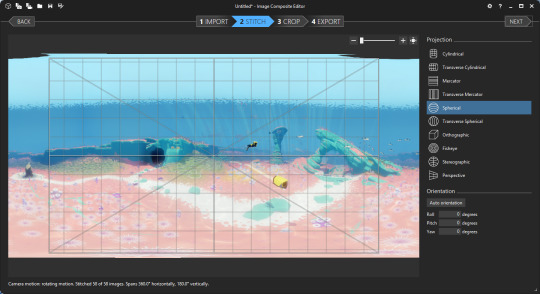
The Spans 360 degree Horizontally and 180 degree Vertically underneath tells you that ICE was able to find enough information in all directions to recreate the entire scene.
Now comes the most important part: Choose a projection.
To Make a Planet: we select Stereographic, and set the Orientation to:
Roll 0 Degrees
Pitch -90 Degrees
Yaw 0 Degrees
If this works, you should have a little planet! You can adjust the shape of this using the mouse, but I tend just rotate the scene instead so I don’t introduce additional distortions.
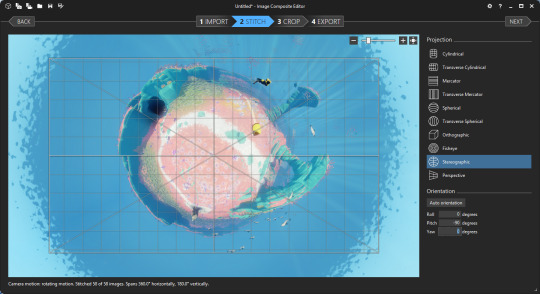
[Alternatively, if you just want a fancy panorama like you see of GTA V or The Witcher 3 on Steam Community with several hundred likes: try another projection then just crop out the area you want. Easy Peasy Lemon Squeezy! YOUR WINNER!]
Cropping

So, you’ve got your pretty pretty all set up, now it’s time to get it into a saveable format. Select Crop from u the top, and after the panorama is projected, you’ll have your scene again. Looking at the Width and Height, you’ll probably notice that the full image is a mite over 15000x15000 pixels. That’s great and all, but a lot of programs will flat out refuse to deal with files this big. Also, there’s probably a lot of extra space around the interesting parts that you’ll want gone, or maybe missing bits of the sky if you didn’t get Zenith. If you’ve followed the guide and only rotated the planet scene, the middle of the planet will be the centre of the image, making auto-centering and cropping super easy. Here, a 10000x10000 pixel crop looks good to me, but this is down to personal taste. My general advice is to see if 7500x7500 will contain everything of interest to your scene. Once you’re happy with the crop, hit Next and move on to Export.

File Formats
I do two exports here. The first is a high quality PNG at 100% scale copy of the scene. I’ll then make a 95-100 Quality JPEG with a Width and Height between 4500-5500 pixels. This is to keep the image size under the 8MB that Steam requires, and to prevent Steam from throwing up additional errors (I’ve had a lot of problems getting it to accept images above 30 megapixels, but your experience may differ).

Alternatively, use a good image editor to downsample the PNG to something under 30 megapixels and below 8MB. I really like FastStone Image Editor for this, the Crop board is excellent.
Sharing
Upload your JPEG to the Steam Community Hub / Flickr / Imgur / Tumblr /, give it a name, and feel the glow of adding something beautiful to this world.
Or just print it out and throw it out the window at a passing dog. That works too.

Troubleshooting
Sometimes ICE will get confused by a scene and fail to project properly. In this case, you can try importing the bare minimum number of images, as something in the scene might have moved or asset reuse in the game will have caused a problem. If this fails again, I often just recapture the scene.
ICE comes with a very basic Autocomplete function for filling in gaps in panoramas. If you notice Grey holes (or if the Autocrop button doesn’t select the whole image), these are missing bits. If they’re not in your scene when you crop at the end, you can ignore them, but otherwise you can try the (quite computationally intensive) Autocomplete system. This will produce variable results, but can work in a pinch. Otherwise, load up a dedicated image editor (Paint.NET or GIMP if you’re broke like me) and clean up the errors in that.
Tips
Everything ICE does, Adobe’s Creative Cloud can do. But ICE is free, extremely easy to use, doesn’t require an internet connection, and can run on any version of Windows newer than XP.
Get Steam to screenshot in PNG, and use these instead of the default JPEGs. Since ICE accepts PNGs as inputs, you can cut out bad parts of the inputs and leave them transparent.
The general rule of thumb: avoid scenes where you’ll have big objects 30 degrees above the horizon. Buildings or Mountains will distort like crazy, and you’ll have this weird bulbous mass that can look very weird. Sometimes trees will look ok though, so experiment and you should get a good idea.
The closer an object is to the camera, the greater the distortion. If you want an object to look relatively normal (Say, a car or a person), try to keep it at least 5 meters from the camera and within 15 degrees of the horizon. However, distortion on people can look *really good* if you’ve got a good eye for composition (See this GTAV shot by a very clever peep).
Another rule of thumb is try to avoid putting anything too interesting directly underneath the camera. Keep this part of the scene relatively boring and go for more eye-catching detail around the horizon. If you’ve got something like a highlighted path in your scene, capturing the scene directly on top of the path doesn’t look as nice as being a few meters away.
Some games will have HUDs that you can’t turn off. In this case, crop out the HUD before stitching, and just take your screenshots a little closer together. Same goes for games with really strong Vignetting that can’t be disabled at all (Looking at you, Mass Effect 2).
There will be games where you’ve got no access to anything that makes capturing a scene easy (The Long Dark is my favourite example. There’s no console, subtle vignetting, no pause, and the player’s breathing makes little clouds in the middle of the screen). In these cases, I do my best to try and capture as quickly as possible. Things like moving clouds and horrible animals coming to gnaw on my guts will mostly be dealt with by ICE, or can be photoshopped out later. Or use it to turn one deer into a distributed herd. Up to you!
This technique will work in the real world, too. Camera + Tripod + the ability to edit out shadows = Good Times.
Worried about Perspective Distortion making everything look weird? ICE should be able to compensate for it in almost all cases, unless you’ve somehow turned your camera into a Duck eye. I’ve done a real-world shot with a 14mm fisheye lens, and ended up with a panorama that had no noticeable perspective effects on it with ICE.
Don’t worry about needing a powerful PC. I used to do this on my first gen i7 with 8GB of RAM and an ATi 5870 (“ Top of the line in ’09! ”), and got the same quality as I get with my NVIDIA GTX 1070 and 32GB of RAM. Image projection, stitching, and editing can be computationally intensive, but if you can run Steam on Windows, you can make pretties.
Example Materials
Here’s a link to the source materials I used to make this. You’ll notice there’s a hole at the top of the scene, but the Autocorrect can fix it for you if you want to use that. Try playing with a few projections to see how these things work without stressing about the capture process, but most of all, have fun trying this stuff!

10 notes
·
View notes
Text
Study of quark speeds finds a solution for a 35-year physics mystery
MIT physicists now have an answer to a question in nuclear physics that has puzzled scientists for three decades: Why do quarks move more slowly inside larger atoms?
Quarks, along with gluons, are the fundamental building blocks of the universe. These subatomic particles — the smallest particles we know of — are far smaller, and operate at much higher energy levels, than the protons and neutrons in which they are found. Physicists have therefore assumed that a quark should be blithely indifferent to the characteristics of the protons and neutrons, and the overall atom, in which it resides.
But in 1983, physicists at CERN, as part of the European Muon Collaboration (EMC), observed for the first time what would become known as the EMC effect: In the nucleus of an iron atom containing many protons and neutrons, quarks move significantly more slowly than quarks in deuterium, which contains a single proton and neutron. Since then, physicists have found more evidence that the larger an atom’s nucleus, the slower the quarks that move within.
“People have been wracking their brains for 35 years, trying to explain why this effect happens,” says Or Hen, assistant professor of physics at MIT.
Now Hen, Barak Schmookler, and Axel Schmidt, a graduate student and postdoc in MIT’s Laboratory for Nuclear Science, have led an international team of physicists in identifying an explanation for the EMC effect. They have found that a quark’s speed depends on the number of protons and neutrons forming short-ranged correlated pairs in an atom’s nucleus. The more such pairs there are in a nucleus, the more slowly the quarks move within the atom’s protons and neutrons.
Schmidt says an atom’s protons and neutrons can pair up constantly, but only momentarily, before splitting apart and going their separate ways. During this brief, high-energy interaction, he believes that quarks in their respective particles may have a “larger space to play.”
“In quantum mechanics, anytime you increase the volume over which an object is confined, it slows down,” Schmidt says. “If you tighten up the space, it speeds up. That’s a known fact.”
As atoms with larger nuclei intrinsically have more protons and neutrons, they also are more likely to have a higher number of proton-neutron pairs, also known as “short-range correlated” or SRC pairs. Therefore, the team concludes that the larger the atom, the more pairs it is likely to contain, resulting in slower-moving quarks in that particular atom.
Schmookler, Schmidt, and Hen as members of the CLAS Collaboration at the Thomas Jefferson National Accelerator Facility, have published their results today in the journal Nature.
From a suggestion to a full picture
In 2011, Hen and collaborators, who has focused much of their research on SRC pairs, wondered whether this ephemeral coupling had anything to do with the EMC effect and the speed of quarks in atomic nuclei.
They gathered data from various particle accelerator experiments, some of which measured the behavior of quarks in certain atomic nuclei, while others detected SRC pairs in other nuclei. When they plotted the data on a graph a clear trend appeared: The larger an atom’s nucleus, the more SRC pairs there were, and the slower the quarks that were measured. The largest nucleus in the data — gold — contained quarks that moved 20 percent more slowly than those in the smallest measured nucleus, helium.
“This was the first time this connection was concretely suggested,” Hen says. “But we had to do a more detailed study to build a whole physical picture.”
So he and his colleagues analyzed data from an experiment that compared atoms of different sizes and allowed measuring both the quarks’ speed and the number of SRC pairs in each atom’s nucleus. The experiment was carried out at the CEBAF Large Acceptance Spectrometer, or CLAS detector, an enormous, four-story spherical particle accelerator at the Thomas Jefferson National Laboratory in Newport News, Virginia.
Within the detector, Hen describes the team’s target setup as a “kind of a Frankenstein-ish thing,” with mechanical arms, each holding a thin foil made from a different material, such as carbon, aluminum, iron, and lead, each made from atoms containing 12, 27, 67, and 208 protons and neutrons, respectively. An adjacent vessel held liquid deuterium, with atoms containing the lowest number of protons and neutrons of the group.
When they wanted to study a particular foil, they sent a command to the relevant arm to lower the foil of interest, following the deuterium cell and directly in the path of the detector’s electron beam. This beam shot electrons at the deuterium cell and solid foil, at the rate of several billion electrons per second. While a vast majority of electrons miss the targets, some do hit either the protons or neutrons inside the nucleus, or the much tinier quarks themselves. When they hit, the electrons scatter widely, and the angles and energies at which they scatter vary depending on what they hit — information that the detector captures.
Electron tuning
The experiment ran for several months and in the end amassed billions of interactions between electrons and quarks. The researchers calculated the speed of the quark in each interaction, based on the electron’s energy after it scattered, then compared the average quark speed between the various atoms.
By looking at much smaller scaterring angles, corresponding to momentum transfers of a different wave length, the team were able to “zoom out” so that electrons would scatter off the larger protons and neutrons, rather than quarks. SRC pairs are typically extremely energetic and would therefore scatter electrons at higher energies than unpaired protons and neutrons, which is a distinction the researchers used to detect SRC pairs in each material they studied.
“We see that these high-momentum pairs are the reason for these slow-moving quarks,” Hen says.
In particular, they found that the quarks in foils with larger atomic nuclei (and more proton-neutron pairs) moved at most 20 percent slower than deuterium, the material with the least number of pairs.
“These pairs of protons and neutrons have this crazy high-energy interaction, very quickly, and then dissipate,” Schmidt says. “In that time, the interaction is much stronger than normal and the nucleons have significant spatial overlap. So we think quarks in this state slow down a lot.”
Their data show for the first time that how much a quark’s speed is slowed depends on the number of SRC pairs in an atomic nucleus. Quarks in lead, for instance, were far slower than those in aluminum, which themselves were slower than iron, and so on.
The team is now designing an experiment in which they hope to detect the speed of quarks, specifically in SRC pairs.
“We want to isolate and measure correlated pairs, and we expect that will yield this same universal function, in that the way quarks change their velocity inside pairs is the same in carbon and lead, and should be universal across nuclei,” Schmidt says.
Ultimately, the team’s new explanation can help to illuminate subtle yet important differences in the behavior of quarks, the most basic building blocks of the visible world. Scientists have an incomplete understanding of how these tiny particles come to build the protons and neutrons that then come together to form the individual atoms that make up all the material we see in the universe.
“Understanding how quarks interact is really the essence of understanding the visible matter in the universe,” Hen says. “This EMC effect, even though 10 to 20 percent, is something so fundamental that we want to understand it.”
This research was funded, in part, by the U.S. Department of Energy, and the National Science Foundation.
Study of quark speeds finds a solution for a 35-year physics mystery syndicated from https://osmowaterfilters.blogspot.com/
0 notes
Text
Anza-Borrego Desert State Park
Anza-Borrego Desert State Park
Borrego Springs, California
Friday/Saturday, June 22 & 23, 2018
Clear, 119°
I first heard about Anza-Borrego, several years ago, on my drive from Anchorage, Alaska to Atlanta, Georgia. I had stopped off for a week to visit my friend Russ in Campbell River, British Columbia. He took me to Mt. Washington, a local ski resort that had closed for the season but there was still plenty of snow on top at the lodge and above. While we were there, we noticed a couple loaded with large backpacks heading off into the snow. They saw us shooting photos of my Flamingo, Placido, and stopped on the trail and turned to ask what we were doing. I told them I was on my way back to the south and was camping my way back through Oregon, California, till I made my way home. I take photos of Placido Flamingo in places I visit along the way. I told them I would be stopping for a night at Joshua Tree National Park when they stopped and asked me if I was going to go to Anza-Borrego? I had never heard of it. They told me it was in the desert close to Joshua Tree and there were massive metal sculptures scattered around the desert that were pretty cool to see. There was a large dragon-like sea serpent, dinosaurs, horses plus plenty more to see. That piqued my curiosity and it was then on my list of places to see.
Anza-Borrego Desert State Park sign
Anza-Borrego Desert State Park (ABDSP) is park located within the Colorado Desert of southern California. The park takes its name from 18th century Spanish explorer Juan Bautista de Anza and borrego, the Spanish word for bighorn sheep. With 600,000 acres that includes one-fifth of San Diego County, ABDSP is the largest state park in California and the second largest in the contiguous United States. The park occupies eastern San Diego County and reaches into Imperial and Riverside counties, enveloping two communities: Borrego Springs, which is home to the park's headquarters, and Shelter Valley. (Wikipedia)
Galleta Meadows Metal Sculptures in Borrego Springs, California
This all began when the owner of the Galleta Meadows Estate, Dennis Avery, (of the Avery Label family) decided he really wanted to add some free standing art to his massive property. He called it “sky art.” Before he got involved with the Sculpture project, Dennis funded a book on the ancient fossil remains found in the area of Borrego Springs. After the book was published he enlisted the help of Ricardo Breceda who began crafting these amazing sculptures and they started to pop up around the desert. Mr. Breceda often claims that he is done creating the sculptures but then another one pops up in the barren landscape making you wonder if there will be more.
The sculptures are off road S22 which goes into the town of Borrego Springs. They are literally found all over the next 10 square miles. The sculptures can be found on both sides of town. The surrounding landscape is so barren it is easy to see them while you are driving.
Horses
Some are right off the road while others are off in the distance. Most have, at least, some sort of dirt road to get to them (be careful driving these, as they can have some deep sandy parts). There are signs saying not to drive on the property but there are tracks all over with many paths leading out to the ones not close to the road. Since Mr. Avery’s passing several years ago, there are no issues with driving out to the sculptures, but the estate does not want anyone to get hurt while viewing the art on the property.
I knew it would be a fun and exciting adventure looking for these sculptures in the desert! The good news . . . this is the coolest scavenger hunt ever. There are over 130 sculptures in Galleta Meadows, each and every one a treasure. The bad (or potentially other good) news . . . there isn't a decent map that I could find. So prepare yourself to driving around, scanning the horizon and watching where other people drive. Be prepared for a few missed turns and backing up to get to that one last treasure. Take plenty of water as this is the desert and depending on what time of year it is you will need to stay hydrated. Make sure you get out of the vehicle . . . the magnitude of the sculptures is only truly appreciated when you are on the sand, standing right next to them. Their size, depth of scale and attention to detail is amazing. This list of art is random in its description and not in any particular order as to what was seen.
The vineyard workers
This was the first group of sculptures encountered. This project that he commissioned with Breceda had a subtle social message: a representation of a dozen farm-workers from the early days when much of Borrego Springs was given over to a vineyard. To tourists and second-home owners flocking to the desert for fun and relaxation, the sculptures were a reminder that, to some people, the desert represented a life of toil in the blazing sun.
Harvesting the grapes
The Sea Dragon
Sea Dragon
This is the one I heard all about in Canada and could only imagine what it must be like lurking and slithering in and out of the sand. The sea dragon, my favorite, is the biggest in sheer size of all the sculptures and it actually crosses the road so it is impossible to miss.
Slithering Sea Dragon
The dragon is really impressive and must be seen to be believed. It rises about 15 feet out of the ground and is 350 feet long. I just wandered down the entire body to see all of the intricacies in its build starting at its tail, then crossing the road to see the sections go in and out of the sand to the massive head, shimmering in the hot sun.
Dragon’s Head
The Scorpion
Scorpion
The scorpion was my second favorite, as it is so detailed and massive. I would say this sculpture is probably about 15 feet tall and 10 feet long. It seems to be in a fight with the grasshopper across from it. I put the RV in the photo between the two for some way to gauge its size but then the 30 foot RV seems tiny with these in the foreground.
Sculptures With RV in background
The Grasshopper
The grasshopper is amazing as well and you should really look at its wings as they are so intricate in the way they are made.
The Mammoths
There are a few mammoths in this field that are probably 20 feet tall and 15 feet long. They are massive and have awesome tusks. There have been a few skeletal remains found of mammoths in this area which would have, no doubt, been crazy to see.
The Camels
Kneeling Camel
The camels are majestic sculptures with unique fur and postures. I find it so crazy the way these characters are in positions, such as the camel kneeling, that seem like it would be a lot more work but makes for an interesting sculpture. You can see in the photo how much attention is paid to even getting the muscle definition on the camel.
There is another camel which is nursing a baby camel with the light and shadows playing off the sculptures.
Camel with baby
The Sloths
Sloth carrying another sloth
I didn’t know what these were until I looked at the map, but the way he made them lying over instead of standing up is an amazing feat. They are designed to look like the Harlan Ground Sloth from the fossil remains that have been found in the area.
Bore & Piglets
One of the many fossils said to have been found in this valley, the turtles are pretty mean looking but are extraordinary to see. There are several sets of turtles scattered on both the north and south locations.
As you drive through the roads that weave through the area, you'll see sculptures of wild horses in a nearby field, saber tooth tigers in pursuit, and desert tortoises that seem as if they're crawling through the brush. The artist, Ricardo Breceda, brings life to his sculptures by capturing each creature in motion. They are so still yet all you see in the pieces, is movement.
Sabre-tooth tiger
Ricardo Breceda got into this quite literally by accident. He was a construction worker who was injured on the job and could not work in his trade any longer. He did several jobs including selling western boots, Ricardo one day traded a pair of boots for a welder and started learning welding. His then six year old daughter, Lianna, when asked what she wanted for Christmas replied, a dinosaur. They had previously gone to see the movie, Jurassic Park III. Ricardo made her a 20 foot tall Tyrannosaurus Rex. What started as a hobby quickly became a passion to transform metal into incredible life like creations. Since then Ricardo has become a well-known sculptor, designer.
The Jeep
Jeep
There is a full size Jeep climbing rocks that is pretty awesome with two people inside. It looks like fun in the desert on a sunny day.
The Padre and his dog
Padre & Dog
Off the road a way, there are several pieces; the over sized Padre and his dog had great detail with stones made into a rosary bead necklace with the dog running at his side.
Horses
Fighting horses
There were many different horses all over the property. Some were running wild while others that appeared very life-like appeared to be fighting.
Miner with his pack horse
Miner with pack horse
I thought the miner panning for gold with his pack horse loaded down was an interesting piece. You could easily imagine the miner on a river with his pan washing out the materials to see what gold lies in the bottom of the pan.
Stagecoach
There are too many pieces of this art to list here and I will post additional pictures on the Traveling Life’s Highways Facebook page shortly.
On a scale of 0 to 10 for an offbeat art exhibit this was a 12 or higher. This was a fun and incredibly creative experience which I highly recommended. This is the desert so you have to prepare a little with water for hydration, good walking or hiking shoes, and remember your safety as this is rattlesnake country so be on the lookout as you walk around. I have to admit this was far better than I had imagined during my conversation in Canada a couple years ago.
The RV resort was great. There was a beautiful golf course, great swimming pool and other amenities. This would be great stop during the fall and winter months when all the Snowbirds head south.
#Anza-Borrego Desert State Park#California#Borrego Springs#Ricardo Breceda#Road Trip#RV'ing#Interesting things#Interesting places#Interesting People#America#America the Beautiful#Traveling Life's Highways#Travel#Desert
0 notes
Text
Dust to Dust (2)

Summary: Where did Hydra come from? An idea? A twisted dream? For an organization that spans centuries, it kept relatively quiet until contemporary times.The Super Soldier serum wasn’t dreamt up over night, but was the product of numerous experiments both unethical and violent over the course of the century. It was going to be the end of all conflicts between good and evil. Scientists died trying to determine the next level of the serum, only for it to be stolen by enemies. Back and forth until one side had the advantage.
Mabel Foster was everything the ideal woman should be in 1914. She was well brought-up, wealthy, educated and the heiress to a large fortune. When her father died in a much publicized U-boat attack by the Germans, Mabel made a decision that changed the course of history by enlisting in the French Army during WWI.
After an ambush gone bad, Mabel found herself captured by an early group of Hydra.100 years later she’s discovered in a desolate Hydra base and is taken by the Avengers for safe-keeping and questioning. Little do they realize that all of their destinies and pasts are directly connected through the nest that Hydra weaved.
Pairing: Bucky x OFC (Original Female Character)
Rating/Warnings: Mature- Graphic violence, torture, PTSD, smut
(Masterlist found HERE)
“Quand je marche dans la rue, la rue vers le Sacré-Cœur. Je me souviens des promesses au nom de l'amour. Je vais t'attendre là. Viendras-tu pour moi?”
“(When I walk in the street, the street to Sacred Heart. I remember the promises in the name of love. I'll wait for you there. Will you wait for me?)”
-The Civil Wars (Sacred Heart)
French Countryside- Location Classified- Summer 1917
Mabel's unit was due to receive their first batch of American soldiers. Once the States had entered the war, it had caused quite the ruckus throughout the ranks of Mabel's senior officers.
They had the advantage now, they argued; it was the German’s folly for tempting the Beast and now the Central powers would pay for their actions.
“Garnier!” The leader of Mabel's unit snapped at the young officer and she jumped to attention at her name. As the years had passed, she'd almost forgotten her birth name. She naturally responded to Pierre Garnier on so many occasions she felt that it'd become a part of her on a biological level.
“The 107th just arrived,” her Captain explained with a long sigh when she jogged up. She knew that meant more coordinating and late nights for the older man who barely slept as it was. “I need you to grab a handful of them and report to the mess for assignment.” He passed off a list of names that Mabel scanned for any semblance of recognition.
Jonah was just entering the age where he could potentially be drafted. It ached Mabel's heart to think that he could be shipped out and murdered just a few feet away from his sister.
The 107th was New York's reserve after all.
With the list in hand, she hurried off toward the front of the camp to report to the American’s senior officer. When he introduced himself as Captain Sanders, Mabel had to fight the blush that threatened to spill over her cheeks.
Sanders had been pursuing Mabel for many years as a potential suitor. He came from old-money and his father was a retired General from the Civil War who'd worked closely with Mabel's family.
Fortunately, the worn leader did not recognize the Manhattan heiress in her current disguise.
“I need Rogers, Marsh, Williams, McDonald, Asher, and Meyer,” she detailed the list and looked up for the small squad of soldiers. Sanders repeated the names into the crowd of soldiers and a few bright faced young men moved forward.
“Here's your boys, I recommend you get to it before someone changes their mind,” Sanders gestured to the group and passed them off to the French soldier.
“We have orders to report to the mess hall for a special assignment,” she announced. Her low voice that she tried to use when she spoke English broke slightly and a few of the men, McDonald and Meyer, murmured under their breath about French pansies.
Mabel elected to ignore the comment and marched forward a few feet ahead of the group.
“They're a bunch of assholes,” a voice commented from Mabel's side. “I know the crap you've all seen out here and you are much bigger men than these fools.”
“I appreciate that,” she gave him a curt nod and offered her hand. “Pierre Garnier.”
“Joseph Rogers,” the blonde gave her a firm handshake and smiled. “When my wife and I left Ireland, didn't think I'd have a chance to see Europe again.”
He had a slight Irish accent that Mabel had only noticed after he mentioned his origins. It was subtle; he’d managed to grasp the New Yorker accent well- not that Mabel was going to admit it.
“Are you in the States now?” She inquired, knowing full well he was from New York based off of the little information she knew of him. But, Pierrewouldn't have necessarily known that.
“Brooklyn,” he replied with a shrug. “Got my wife and our soon to be baby settled before shipping out.”
“Congratulations,” Mabel murmured, a pang of sadness hitting her when she realized he'd probably miss the child's birth during his service.
“Thank you,” he gave a grin. “Sarah is wagering it's a boy but I'm positive it's going to be a little girl. I was the first and only boy in my family. Us Rogers’ make girls.”
“I guess we shall wait and see,” she commented with a reassuring smile. Joseph seemed so kind compared to the cruel and violent world she'd become accustomed to.
“What about you? Family around here?” he questioned the soldier. Mabel knew he was trying to be friendly, but she was so out of touch with normal social practices that the question came out of nowhere.
“I have a fiancé in the States,” she replied quickly. It wasn’t entirely a lie, considering Pierre was her betrothed, but neither party had an interest in following through with the arrangement. “And a sister back in Paris.” Well, Pierre, had a sister in Paris.
“I’ll make sure we wrap this war up quickly then,” Joseph chortled. He clapped a hand on Mabel’s shoulder. “Can’t keep you and your lady away for too much longer. It’s just inhumane.”
“Feels like this war is never going to end,” Mabel grumbled lightly before saluting the waiting soldier outside of the mess.
“That’s going to be up to you, Garnier,” her superior officer had heard the comment and smirked in her direction. “You men are some of the best shots in Europe and the powers that be have decided to put their faith in you.”
“When did it really hit you?” Steve asked Bucky while they watched the frail woman sleeping in the medical bay. They’d been instructed to wait outside the room while doctors and nurses fretted about.
“When did what hit me?” the brunette asked, not bothering to look up at his companion. Instead, he kept a tight blue gaze locked on the woman as her chest slow rose and sank on the sterile bed.
“The reality of what had happened,” Steve clarified. “Time travel, Hydra, and the general confusion.”
“Not sure if I’ve fully accepted it, to be honest,” Bucky replied. He gave a long sigh and narrowed his eyes at a machine showing the woman’s vitals. For 120-something years old, she was doing pretty well. Perhaps it was a testament to Hydra’s scientific ability.
“I get that,” Steve shifted his weight. “I keep thinking I’ll wake up and be tiny again.”
“Hey, you never know,” Bucky glanced at his friend and allowed a grin. “We’re all just test subjects right?"
“I don’t know, if whatever is in us kept her going for 100 years, maybe I’ll never see it happen,” he joked. Steve gave Bucky a punch and the latter muttered under his breath.
“Punk,” he shook his head and continued to stare through the glass. “Her face- it seems familiar. But I can’t place it.”
Admittedly, when Bucky first saw the mysterious woman, he felt that tugging at his memory he hadn’t felt since initially leaving Hydra’s control. He couldn’t place it. She never worked with him on missions and she was too young to have been out of freeze for very long to interact significantly with him.
“Anything bad?” Steve’s voice revealed an air of worry to Bucky’s comment. “Maybe a sleeper agent?”
“No,” he frowned. “Nothing like that. I would have known.”
He’d been instructed to work with a number of agents from around the world. Bucky would have definitely remembered her.
“I’m sure we’ll find out then,” Steve nodded toward the med bay where the woman was beginning to stir. Non-essential staff was ushered out by the lead doctor and Steve was gestured to go inside. “Wish me luck.”
“Don’t die,” Barnes teased in return, helping his friend by opening the glass door for him.
Steve made his way to a chair by the woman’s beside and waited patiently for her eyes to flutter open.
After she falsely recognized Steve in the Hydra base, it was decided that perhaps he be the one to introduce her to the new world she now resided in. He definitely had the experience, both personal and professionally helping Bucky.
Bucky leaned into the glass, wishing more than anything he could hear the conversation that was occurring in front of him. Steve spoke first, and Bucky could tell the super soldier was talking in hushed and calming tones. The woman simply sat up in her bed and stared.
Her eyes trailed around the room, studying the various pieces of equipment and the doctor who stood quietly to the side, before settling on the blonde once again. Bucky was suddenly thankful for the one-way glass that surrounded the room.
If she was frightened, she didn’t reveal it physically. Clearly this was a person who had mastered masking their emotions long before this encounter. Next to Bucky, a psychologist was listening through a headset to what was being said and scribbling down notes. The former assassin tried his best not to be nosy but caught a few glimpses of what had been written down.
Hesitant, observant, nervous
Nervous? Bucky did not agree with that assessment one bit. He knew that look and it wasn’t a nervous one. If anything, she was prepping an escape or mentally taking in her potential threats before making a decision. Steve stood up and offered a hand to the woman and she gave it a gentle shake, her eyes still watching him with suspicion and judgement.
Psychologists were a load of crap anyway- at least in Bucky’s opinion. They didn’t do anything and honestly caused more trouble than they resolved. Sure, Steve would probably disagree, but Bucky refused to back down from his stance.
She still hadn’t opened her mouth- choosing instead to listen to the information given to her. The doctor now stood forward and ran through some clinical information. Steve was off to the side, occasionally sending the woman a reassuring smile or nod after the doctor said something. After that, the doctor left the room to just Steve and the woman.
Now it was Bucky’s turn.
When the doctor went into the hallway, she gestured for Bucky to go inside. Clearly they were happy with the young woman’s progress if he was allowed inside. Steve was supposed to cover the basics- Hi, you’re in the future. I’m from the past too. Everything is ok, you’re not with Hydra anymore. Bucky was mainly there for moral support.
He opened the door and slid inside as quietly as he could. He didn’t want to rattle her; knowing full well how every sense was tuned to the smallest stimuli after freezing.
“This is James Barnes,” Steve introduced, pushing him a little closer to the woman. “He was a soldier too, in a different war with me.”
“Hello,” he greeted, suddenly feeling very awkward and clumsy under the woman’s hazel gaze. It seemed like the color of her eyes had hardened now that she was a little more conscious.
“I remember you,” she simply stated, her expression unchanging and sending a chill down Bucky’s core. She recognized him as well. He wasn't crazy. He tensed, waiting for more information, readying himself to fight.
“He was in the lab with us when you initially woke up,” Steve tried to interject but she shook her head.
“No, before this,” she noted, her expression slipping to confusion a brief moment before the mask covered her again. “You’re still young.”
James was at a loss for words. He hadn’t encountered a single soul from Hydra who didn’t mean him malicious intent, perhaps he'd forgotten a bitter past? Maybe she was a sleeper agent he'd encountered briefly during his training? He stood there, his expression souring before Steve intervened with a quick question.
“What do you remember?” he prompted the woman, his hand going to Bucky’s arm to calm the man. It was probably for the best. Bucky felt like he was about to make an incredibly stupid decision if left to his own devices. He kept his mouth shut and let Steve do the talking. Even if he thought Steve was an idiot for underestimating this woman's past, perhaps violence wasn't the best approach.
“I met you twice,” she continued, her voice growing in strength while she spoke, her body language suggested no anger or resentment, but perhaps she masked it as well as her other thoughts. “Before and after…” she gestured toward his left arm and frowned. Was that guilt he detected? Perplexed, Bucky felt his chest loosen and he grabbed an extra chair from the side of the room, sliding it next to Steve's. The blonde soldier` took note and sat down next to him, his eyes glancing in Bucky's direction, ready to jump in if needed.
“They did a- er- something on us-,” she paused trying to find the correct word. “Transfusion sanguine.”
A blood transfusion, he mentally translated. From time to time he recalled flashes of his fall from the train; the agony of losing his left arm and the subsequent surgery that followed.
“Your arm was not saved, despite their efforts,” she explained, the hardening in her eyes shifting to pity at the man in front of her. “The transfusion saved your life. They said something about a serum. It was in Russian so I didn’t understand it all.”
“What happened after that?” Steve tried to pull more information from the woman, but her eyes became distant and she shook her head.
“I don’t think that’s a story for today, my apologies,” she practically whispered the words, her voice hollow and shaking. That was fear, Bucky realized. And he was pretty sure he knew why.
“Your name’s Mabel, right?” Bucky finally spoke up and the auburn haired woman looked startled at his sudden question. She looked as tense as he felt, perhaps she had been reading him while they spoke. He repeated the name in a softer tone. “Mabel Foster?”
“No one has said that name in a very long time,” she replied with a weak smile, visibly relaxing. “But yes, that is the name I was given at birth.”
The trio fell silent before Steve stood and announced that Mabel needed to get some more sleep before they tried to talk again. Bucky murmured his agreement before Mabel interrupted their leaving with a small question.
“You said I’ve been asleep a while,” she looked uncertain a moment, as if she wasn’t interested in the answer to the question but knew she had to ask. “And you’re still here…” she trailed off when she looked at Bucky. Her expression lost and distant a moment, they waited for her to continue. When she jumped back to reality, she finally was able to phrase the question. “What year is it?”
Steve stumbled over words before Bucky stepped forward and knelt down next to the woman’s bed so he was eye level with her. He wasn't going to pull the punch. The sooner she find out, the better.
“It’s been a hundred years, Mabel,” he stated firmly. The woman didn’t look surprised, he noted while he waited. She rustled some of her blankets and repositioned herself on the small hospital mattress.
“I see,” she merely commented. “Thank you Mr. Barnes, and Mr. Rogers.”
The men could tell that was her way of dismissing them and they quickly parted the room. When they entered the hallway, the medical staff had all but disappeared. Tony and Natasha had made their way to the level and were muttering amongst themselves.
The lights in the room dimmed when Mabel fell back into her bed. Before Bucky could catch another look, Tony blacked the glass out, conserving the woman’s privacy for the evening.
“She knew you,” Natasha stated when the soldiers approached their duo. “Are we sure she isn’t an agent?”
“I don’t think so,” Bucky insisted. He ran an anxious hand through his mess of brown hair and shook his head. “She gave me a blood transfusion. I think she was a science project for them.”
To his core, Bucky felt sick at the idea of the woman waiting around to be harvested after he returned from missions. Perhaps it’d been a one-time thing and she’d been the most stable with his serum?
“We’re still working on the files we gathered from the base,” Tony’s voice brought Bucky out of his daze and he saw that Steve and Natasha were listening intently. “It was built by a Dr. Krauss toward the middle of World War 1. Funded by a wealthy beneficiary in the German empire with Hydra ties but that’s all we know right now. Hopefully when our friend is feeling up to it, she can provide a little insight."
“If we can trust her,” Natasha reminded him coolly. Of course the red haired spy was careful to believe anything an outsider brought to the table. She needed all the facts, and if the facts showed anything at this point, this woman was no better than Bucky was at his height of power in Hydra.
“I’ve got nothing but time,” Tony laughed, folding his tablet shut and turning on his heel toward his apartment.
Germany- French held Trenches- Midnight- August 1917
“She lost the baby,” Joseph whispered to his companion over the hum of explosions and stray gunshots. “In June, I guess.”
“Joseph, I’m so sorry,” Mabel gave her friend a genuine look of misery for his suffering. The blonde-haired man leaned up against the muddy trench and frowned.
“I’m supposed to ship back for a week in October,” he continued solemnly. “Maybe we can give it another try.”
“Perhaps,” Mabel agreed quietly, unsure of what else to supply to him. When her cousin lost her first child, the woman was inconsolable. What Mabel would do for Joseph to be by his wife’s side during this devastating time...
“Our neighbors are watching her,” he added. “The Barnes’. They just had a boy of their own a bit ago. Sarah said he’s a sweet kid, a quiet baby. Hopefully that’ll help. Gee, I don’t know.”
He gave a bitterly sad laugh. The pain was echoed through the trench a moment.
“I was technically right,” he added after a few heartbeats of silence. “It’d been a girl. Her name was Maria after Sarah’s mother. They found her a little plot outside of the cemetery.”
“That’s good.”
“Yeah,” he agreed softly. “I’m gonna visit her when I go back.”
“Send my regards,” Mabel replied, she blinked back a few tears that threatened to spill over.
“Her Uncle Pierre will always be welcomed,” Joseph snickered. “I’ll make sure Sarah sends some goodies back with me. We gotta fatten you up.”
PART 3
#mcu#Bucky Barnes#porcelainstorm#ao3#marvel#fanfiction#original female character#OFC#Winter Soldier#ww1#ww2#hydra#james barnes
0 notes
Text
Anne Morgan Jewellery: Exclusive Contemporary Exhibition
Today, we’d like to introduce you to the lovely Anne Morgan Jewellery. Anne is an established, award-winning contemporary jeweller, specialising in handmade reticulated jewellery, a process that results in unique ridged and rippled textures on silver or gold. As well as her own work, Anne showcases striking pieces – made from a range of materials – by some of the UK’s leading designers and makers at her jewellery shop and gallery in Penarth, in the Vale of Glamorgan. Alongside remodelling of old jewellery and commissions of new pieces, she also holds regular wedding ring workshops, allowing brides and grooms-to-be to design and make their own bespoke jewellery. For more, see annemorgan.co.uk
Exclusive contemporary jewellery exhibition showcases cutting edge UK designer/makers
On until May, the exclusive Sp-Ring exhibition features fine handcrafted rings in silver, gold and precious stones, including eye-catching signature collections from the likes of Daphne Krinos, Emily Thatcher, Ching Chin, Hannah Bedford, Hannah Louise Lamb, Jacks Turner, Jane Macintosh, Kate Hodgson, Mark Veevers, Sarah Pulvertaft, Sue Lane and Sylvaine Frouin.
“We’re really lucky to have secured rings by these fantastic jewellers,” said Anne Morgan. “This showcase is for a limited time only and comes to an end in May, so do not miss the chance to adorn your hands with these gorgeous, highly covetable beauties. We will find it very hard to say goodbye to all of them!”
CHING CHIN
Based in Bath/Bristol, contemporary jeweller Anny Ching Chin Hsieh has been making and designing jewellery since 2009. With an architectural background, her work – quirky yet elegant, bold yet feminine – balances proportion, intricate detail, texture and colour.
Oval grey diamond ring with pave set diamonds chingchinjewellery.com
DAPHNE KRINOS
Known for her dramatic, instantly recognisable designs – inspired by geometric forms and the urban landscape, and defined by bold use of colour, form, shape and texture – Krinos creates unique, one-off sculptural jewellery entirely by hand, working with gold, black oxidised silver, various metals and precious gems. Originally from Greece, her distinctive work – some of which can be found in the permanent collections of the Victoria & Albert Museum, amongst others – has captured a broad and loyal following.Sculptural Ring in lightly oxidised silver with 18ct yellow gold and diamond daphnekrinos.com
EMILY THATCHER
Fascinated by electron microscope images of the world around us (the microscopes use a beam of accelerated electrons as a source of illumination), Thatcher translates these forms and textures into sculptural, wearable art objects, handcrafted and forged from metal, with gemstones selected for their unique beauty and rich colour. Her work is exhibited regularly at UK galleries and craft/design shows.Double tourmaline ring emilythatcher.co.uk
HANNAH BEDFORD
One of the leading makers of contemporary jewellery using the art of granulation, an ancient art form where each piece is adorned with fine granules of precious metal. Meticulously handcrafted in her London studio, Bedford’s beautiful bespoke commissions play with scale and form, combining contrasting metals and feature statement stones.
hannahbedford.co.uk
HANNAH LOUISE LAMB
A graduate of The Royal College of Art and Glasgow School of Art, Lamb has had her jewellery exhibited internationally. Working from her studio near Edinburgh, she’s inspired by coastlines, vintage maps, colours and textures that draw associations with her idyllic childhood in Cornwall. With skills rooted in traditional fabrication techniques and quality workmanship, she loves making custom, heirloom-worthy items that allow people to tell their own story.
Coastline rings in silver and 18ct gold hannahlouiselamb.com
JACKS TURNER
Working primarily in 18-carat gold and platinum, the award-winning Bristol-based jewellery designer combines conventional goldsmithing and stone-setting techniques with the latest in computer-aided design technology to create exceptional, elegant and distinctly modern pieces, each finished by hand.
JANE MACINTOSH
Widely exhibited in the UK, Europe and the USA, MacIntosh makes one-off pieces of timeless, tactile jewellery, using silver, 18-carat gold, palladium, gemstones and even less precious minerals – such as slate – to add texture, interest and depth. Inspired by the Bauhaus movement and the urban landscape, she uses traditional goldsmithing skills to create highly individual, bold and intricately-crafted designs.Smokey quartz & prasiolite rings janemacintosh.com
KATE HODGSON
Specialising in Victorian flower setting, where metal is pulled over a gemstone to create tiny flower shapes, and influenced by botanicals and vintage jewellery, Hodgson’s work – made at London’s renowned The Goldsmiths’ Centre – has sold internationally and been featured in Vogue and Harper’s Bazaar, amongst others.
katehodgson.co.uk
MARK VEEVERS
Designed for both men and women, and inspired by road signs and symbols, Veevers uses a range of materials and processes to create unique, handmade pieces. He combines mild steel, silver, 18-carat gold, ceramics, diamonds and vitreous enamels, with design decisions often made at his bench, in the heat of the moment.
markveeversjewellery.com
SARAH PULVERTAFT
A graduate of Sydney College of The Arts, Pulvertaft exhibits widely in the UK and overseas. Inspired by the rural environment surrounding her Oxfordshire workshop, she uses traditional techniques to make silver and gold jewellery, typically featuring subtle undulating surfaces and patterns.
Large cube ruffle ring in silver & 18ct gold sarahpulvertaft.com
SUE LANE
Working from a her rural Herefordshire studio, Lane’s bespoke contemporary designs are subtle and minimal, with clean lines and a soft finish, punctuated with carefully sourced and selected diamonds and precious coloured stones. Each one is unique, borne of her desire to keep pushing boundaries, experimenting and evolving.18ct gold ring and sapphire suelanejewellery.co.uk
SYLVAINE FROUIN
The Brighton-based, French-born jeweller creates quirky, tactile items that make you smile and tell a story. Rooted in detail and inspired by “the innocence of childhood, the beauty of nature and the magic of dreams”, Frouin employs various different techniques, bringing together materials such as silver, resin, wood, gold and gemstones to make organic shapes with geometric lines; faces are a common theme, too.Circus ring in silver with cornelian and iolite sylvaineart.com
If you’d like to visit the Sp-Ring exhibition, it is on until May at Anne Morgan Jewellery in Penarth.
//
Liked this? You might also like these! :)
Engagement Rings: The beautiful Clogau Compose Range
Cwtchfest Exhibitor Spotlight: Part 5
How to Choose Your Wedding Rings
Real Wedding: Christine & Alyn’s Red & Blue Wedding by Maria Farrelly
Groom To Be Diaries: The Civil Partnership Ceremony Before Their Big Day!
The post Anne Morgan Jewellery: Exclusive Contemporary Exhibition appeared first on Cwtch The Bride.
0 notes
Text
Milwaukee’s Best Grilled Cheese
Shepherd Express

Contradiction is part of the core curriculum of college life. It’s a time of striving, worldliness, perspective, difference-making, while most of at least two years are spent focused solely on how to dupe the local liquor store counter man. It’s a time of intelligent thinking and wisdom, combined with poisoning brain cells and endless cigarettes. For me, there was a Woody Allen-ish romantic montage of Nietzsche, lofty poetry, and independent city living, all while, really, mom paid the rent, and my palate was sated, happily, lustily even, by grilled cheese. Not just grilled cheese, but a hastily slapped together, George Foreman-ed sandwich, with whatever-was-on-sale enriched flour white bread, two Kraft singles, and, nothing else. I’d have a second had an extra long nap fortified my appetite enough. Which it often had.
It wasn’t just because the kitchen of the slum-lorded duplex on 18th and Kilbourn was generally a war zone, with but a sliver of formica counter space to concoct any kind of foodstuff without contact with multitude expanding bio experiments. Or that I was a poor college student, subsisting on Leinenkugels, dreams, and depleted funds from too frequent late-night forays to Marquette Gyros. Well, it was that. But, also, the fact remains: grilled cheese is the most satisfying of youth-time creature comforts, running alongside, perhaps even topping, peanut butter and jelly. After all, there are fewer ingredients, yet more magic: The calculus involves the Maillard reaction - the chemical breakdown between amino acids and sugars that makes toast taste better than bread, and cheese - ideally, unsophisticated American - transforming itself into a rivulet-like goo of warm, salty smackiness. It’s the richest of hoped for satisfactions when you’re halfways between the kitchen’s of youth and the future apartments of the partially employed, shivering yourself to sleep on a futon, drunk on Henry Miller hot plate reveries.
It was about when I started having the funds to add bacon to the formula, to take the time to butter the bread, possibly chop tomatoes, to splatter with Frank’s Red Hot or whatever was on hand, that I realized I was actually, maybe, becoming an adult. Ready for the sophistication of a complex world, for the nuances of real life, which is best tackled when you embrace your roots, your simplest times, the grandma-makes-it-best comforts, and build upon them. The habits of youth aren’t all meant to be gotten over. Sometimes they are just in need of tweaking. College wasn’t the time - for a lot of things. But with some remove, it’s nice to look up, out, and sample Milwaukee’s best grown up takes on the simplest, most childish of caloric releases.
7. Elsa’s
A place no stranger to contradiction, Elsa’s is part bustling, waiters-in-ties, big city gastropub, with ornate doorways, columns, and a tablecloth aesthetic, and part fat guy destination of rich burgers, pork chop sandwiches, and stellar chicken wings. There might be some sticker shock at the sight of the tightly packaged ten-buck All American Grilled Cheese, but there’s an attention to detail, starting with the golden brown char on the bread. Then there’s the medley meld factor - American, white cheddar, Colby and Swiss topple and coalesce, with thick cut Nueske’s bacon struggling for air, asserting itself with grease through the dense meltiness. Tomato slices pop make it all pop - warm and cool, heavy and bright contrasting factors that is the grilled cheese at its best. A harmonious dichotomy. Like dining next to Herb Kohl while licking your fingers of cheese goop and Texas Gunslinger jalapeno hot sauce - a uniquely Elsa’s experience.
6. Saz’s
Between the catering gigs and the ubiquitous summer festival circuit presence, it’s easy to see why Saz’s is oft forgotten as a Cream City brick and mortar. But inside the west side joint you can find a solid and friendly old school circle bar, with dozens of TV’s worth of sports, signed jerseys, Christmas lights in January, and a train going by out back setting the scene like a forgotten industrial corner pocket of a Norman Rockwell. There is also something of a signature sandwich therein, though the Brisket Grilled Cheese is just as much a ‘melt’ as anything. Either way, cheddar can be tough to truly make melt, and here they go halfway, creating a more solid pocket for the buttery, fatty brisket wedges. Pork fat is still king within the folds of a grilled cheese, but the beef is an inspired turn, with the sharp, earthiness of the package cut by a not-too-syrupy onion BBQ sauce. Lightly toasted sourdough keeps things neat, a quick package of meat, cheese, and bread, like you were at Summerfest and sliding toward the next stage. Here though, there is nothing next but another beer and match on the tube.
5. Palomino
It’s not exactly a grilled cheese, but the pimento - the ‘P’ part of the PBLT - takes on such an ideal of swirling soft meltiness, piqued by peppery brightness, that it’s in the appropriate hot spirit. Spread generous between a just-short-of-toasted Italian hoagie, made supple and sturdy by crisp lettuce, fatty and happy by thick cut, black-streaked bacon, it’s a sandwich luxurious enough for guilt-laden satisfaction, but tightly enough structured to dip greedily in Pal’s tangy homemade hot sauce. It’s hard to endorse anything on the menu that isn’t the griddled brisket burger or the hot fried chicken sandwich. But, the pimento - warm, creamy, spicy - especially when prefaced by the curds - light battered, so sheeny and bubbling they might as well have been fried at the table - makes for the best possible Milwaukee cheese binge. Even in a city where that can be done on every street corner.
4. West Allis Cheese & Sausage Shoppe
It’s hard to feel anything but gloom on a late January Monday, post snow and mid state of slush, a time of gray in the sky and soul. So, it’s really the greatest testament to this friendly ‘Stalis corner grocer that keeps making ‘Best Of’ lists that they can warm such a situation with a bit of comfort and coziness. They call it the Cheesy Joe, and add sloppy Joe mix to make for a double dose of childhood comfort in one adult-leaning sandwich. While it’s a combo and name your dad might have to describe a favorite late night snack after too much of his special juice, there’s a rich golden brown finish on the white bread, indicating the amount of butter used for everything at grandma’s house when you were tiny and she deemed it necessary to put “meat on your bones.” Between, two warm, liquefying slices of American envelope the salty, crumbly beef. By the end of the sandwich, especially, the two components are running tag team, softening together, entwined, fond of each other, like a sated eater should certainly feel about life and the rest of the day. If that doesn’t work one of their Bloody Mary specials may do the trick - they garnish with a mini grilled cheese.
3. Camino
Maybe nothing captures the Fifth Ward flux like Camino’s grilled cheese - it takes the greasy, buttery, flattop texture of an old school diner melt, and infuses it with kimchi. All Americana nostalgia meets ancient Korean side dish staple. It’s Zad’s welcoming the worldwide foodie aesthetic of Cermak Fresh Market. It’s Rockwell Automation across the street from high end condos and the pricey, pristine Laughing Taco. Predictably, despite the sweet roll of the fusiony name ‘kimcheese’, it actually hardly works on paper - dichotomous, yes, as kimchi is primarily a side, and we’re used to it mostly in rice or sausage situations. But, also, between the aging vegetables and multiple cheeses, isn’t that an intestinal overload of microorganisms? In practice, it actually takes a mouthful minute too. But once they settle together, it’s simple: the salty, spicy, brininess of the fermented cabbage mash props up the liquid goo of very melty American, Swiss and provolone with an intense, pungent punch. Like a pepper jack, but with live chiles. And there’s plenty of residual sauciness to keep the tongue bouncing and guessing and trying to categorize throughout. It’s a grilled cheese of happy co-existence, an innovation on the simplest of staples, showing you don’t have to choose exclusively between old and familiar and new and daring.
2. Uber Tap Room & Cheese Bar
On the weird gauntlet of 3rd Street downtown drinking, often only explored pre or post Bradley Center, this generically named cheese castle stands alone. It only takes a few steps in the door for a sharp aroma punch of the wall-full of milk proteins and fat, and the deceivingly simple menu cashes in on their weapons cache, featuring cheese boards, mac n’ cheese, and a thinking fat man’s glut of grilled cheese - salami and cheese, BBQ pork and cheese, waffle grilled cheese. Any should do the trick because the technique seems perfect. An example: the ‘Spicy Gourmet’ with smoked pepper jack and ghost pepper cheddar yields an inner mash that is piping and just this side of soupy, with stretchy strings of rubbery happiness connecting mouth to cheese pocket post bite, the softness contrasted by a crunchiness of crusts, the griddle char marks on the bread bleeding butter, garlic aioli swimming throughout subtle and spicy, a bright punch of scrunchy sundried tomatoes drowning in all the delectable, magma-ish mouth-fill. Even the presentation is careful and neat - the two halves stacked ceremoniously among a smattering of extra salty chips. Before you realized going out downtown was mostly homogenized meatheadedness, these are the kinds of visceral pleasures one might imagine Old World 3rd Street could afford. The 36 Wisconsin beers on tap make it easy to not feel too nostalgic that you grew up past those innocent college days. And such serious takes on beer and cheese help make it more than passable that this is what we’re known for as a people, and that a Kings vs. Bucks matchup is now a big Saturday night out on the frigid winter Milwaukee streets.
1. Comet
Aside from being named for a tabloid headline-grabbing statutory rapist whose mistress shot his wife in the face, there’s nothing to not like about the Buttafuoco, Comet’s cheesy tomato menu star. From the black char spots from the broiler on the rich and creamy mozz and provolone mix, to the way said cheeses drape over and fuse to the Italian hoagie roll, to the roll itself, so soft, just getting toasty, to the occasional brace of red onion, mixed with running warm mayo, from the hot pepper mash pop, and tomatoes that somehow don’t interfere with the structural integrity, to how quick the servers are to agree to add bacon to the whole contraption. Then there’s the way the bacon itself - crisp and thick - assimilates itself to the sandwich, a refreshing reminder that meat doesn’t have to be a centerpiece to shine, and that any joint with ‘bacon’ in the WiFi password knows how to do it. There’s lettuce on top too, but it seems like a joke, such is the bruising nature of this behemoth, which includes a bit of everything on the taste spectrum. It’s both exciting and a bit too much. Leaving bad breath and the need for a nap - like so many good memories of first apartment East Side nights. It’s a sandwich indicative of the young neighborhood itself, of ‘Welcome to Adulthood’ - reminding that it is both delicious and daunting, a continuous race for funds for such cheesy vices, and is but a struggle to not get fat on the finer things.
0 notes
Text
Panavision revives 70mm for a digital world: part 2
Does large format really create a greater sense of depth and dimensionality in a flat image? Read on to find out…
If you haven’t yet read part 1 of this series, you can find it here.
MAGNIFICATION: REALITY’S NEW BEST FRIEND
Let’s start with a couple of images, which will save us a few thousand words of explanation:
This is where the “epic” look, that I remember from Panavision Super 70 films such as Lawrence of Arabia and Doctor Zhivago, comes from. There are three things to notice here:
• The subject’s face is round in the bottom image, while it appears wide and flat in the top image.
• The background appears closer to the subject in the bottom image.
• Depth of field is reduced in the lower image, even though the angle of view is nearly the same.
To make this more obvious, I’ve made an animated GIF that flips between these images:
Tight lenses magnify the image. This is easy to visualize, as we all know that longer lenses make objects appear larger in the frame than shorter, wider lenses. Standard Super 35mm focal lengths project an image that fits perfectly on a Super 35mm sensor, but fill only the very center of a 70mm DXL sensor. Resizing that tiny Super 35mm image to fit on a 70mm sensor requires magnification, and that is achieved by using a lens of a longer focal length. In this example, a 50mm lens on a 70mm sensor roughly matches a 27mm wide angle lens on a Super 35mm sensor.
While the angles of view are roughly the same, a longer lens is still a longer lens. They don’t show the same kind of distortion that we see in wide lenses, and this results in a wide angle image that reproduces shapes in a more accurate and pleasing manner than is possible when shooting in S35 with the same angle of view. The fact that the background feels closer results in increased background detail, even though that background is softer. Sometimes the larger background creates an increased sense of depth, as depth cues become visible on the background itself. And the ability to throw the background out of focus on a wide shot, if desired, becomes a powerful tool in guiding the eye around an extremely high resolution image that may only be on the screen for a few seconds.
I found the following quote relating to large format cinematography in an article on the American Society of Cinematographers website:
“You get these incredibly big shots, but you don’t feel that they’re wide angle… You feel like you’re right there, in the moment. And that’s a really unique experience. It has to do with how the image size and the magnification work together.” -John Schwartzman, ASC
It’s good reading, so be sure to take a look when you’re done here.
35MM ANAMORPHIC VS. 70MM SPHERICAL: CLOSE, BUT NOT QUITE
The following images, found on Wikipedia, show the difference between spherical 35mm film capture and anamorphic film capture:
Spherical 35mm film.
Anamorphic 35mm film. By Andreas -horn- Hornig, courtesy WikiMedia.
The angle of view captured by a spherical lens on a 70mm sensor is nearly the same height as that captured by an anamorphic lens on a 35mm full frame sensor. This is because each lens has roughly the same magnification, at least in the vertical axis.
A spherical lens simply projects an image onto the film or sensor. An anamorphic lens squeezes the image first, projecting an image that’s taller than the standard 35mm frame while also compressing it horizontally by 2:1.
The excellent IOS app PCam shows that, for the same focal length lens, both formats see roughly the same angle of view:
This does not mean that these formats are completely comparable in how they render perspective. Anamorphic lenses are effectively two lenses in one: a longer focal length vertically, and a wider focal length horizontally. A 50mm anamorphic lens, for example, is a 50mm lens in the vertical axis and a 25mm lens in the horizontal axis, while a spherical lens is 50mm in both axes.
You should see some of the benefits of large format cinematography simply by shooting 35mm anamorphic on a full frame sensor. It won’t be completely the same, though: the squeeze eliminates a fair bit of horizontal resolution, so while vertical resolution is increased, horizontal resolution is significantly decreased. And a 35mm anamorphic image certainly can’t compete with a full resolution image captured through a spherical lens on an 8K sensor. (If you want to be the ultimate overachiever, Panavision makes anamorphic lenses for the 70mm format.)
While many of us enjoy the anamorphic look, it’s nice to have the option of the spherical look, with less distortion and higher resolution but the same depth of field.
SUMMARY: PUTTING IT ALL TOGETHER
During an email exchange with Michael Cioni, Senior Vice President of Innovation for both Panavision and Light Iron, he made a series of comments that I felt summed all this up perfectly. I repeat them here with his permission:
If we simplify the question about sensor resolution, we are always met with an interesting fork in the road. In order for digital sensors to achieve a large format aperture, there are essentially two main options:
Increase the pixel pitch and plot them on a larger target, maintaining the same resolution
Shrink the pixel pitch and plot them on a larger target
In the first choice, if you were to increase or expand the size of each pixel and spread them out, you would notice an increase in contrast as well as introduce additional artifacts that make the image appear to have a “duotone” effect due to macro blocking that would render the images very sharp (this is a common problem with large electronic signage). However, when you shrink the pixels and plot them on a bigger target as in choice two, something interesting happens…
Smoothness.
That’s the word our DPs seem to keep circling back to. Somewhat serendipitously, “smoothness” is also a common word used to describe what the still photography market has experienced as they, too, have transitioned to an increase in resolution coupled with a decrease in pixel size. Most people (photographers and cinematographers) generally prefer the benefits of large format when shooting images. The irony is, in order for the large format properties to work, your resolution automatically goes up.
This is a key concept to unpack because the general consensus among artists is to assume that resolution is the goal of making a better sensor when in fact, it’s merely a result. In order to provide smother images with a noticeable increase in field of view and depth of field control, resolution must go up. Yet when this happens to the polygons forming pixels on a CMOS imager, the increase in pixels actually lowers contrast and increases transition from one code value to the next. That transition then allows a sensor to better apply its fixed dynamic range values across more area (particularly smaller areas), which effectively increases the dimensionality of an image (what we qualify as smoothness) because a smoother transition gives the illusion of increased depth.
An over-simplified way of saying it is you can’t assign all available dynamic range to an element that can’t be resolved. An increase in resolution increases precision, which allows more available dynamic range to be applied to subtle areas of the frame creating more transition.
Here’s how these concepts play out in a very basic chain-equation:
Increased sensor size = increased resolution (provided the pixels remain small)
Increased resolution + sensor size = increased magnification (improving field of view and depth of field characteristics)
Increased magnification = more dimensional separation (z-depth creative control)
Increased dimensional separation = increased precision placement for color application
Increased color application = more granular transitions (from bit to bit)
More granular transitions = less contrast (less binary or coarse bit transition)
Less contrast = less perceived sharpness
Less perceived sharpness means images appear smoother
The above concept does not mean that lower resolution cameras produce poor images. That is simply not true, nor do I believe that. However, the above chain equation explains why higher resolution, when coupled to a larger target, creates smoother results. And in the pursuit of increased quality and precision, the higher resolution image is going to have more of a positive impact than people may initially suspect.
The most common criticism I hear from skeptics in regard to DXL and RED’s 8K sensor program is that it’s going to make images sharper to the point that you’re going to see inside the pores of a face. But when they come back from a shoot, it is common to hear artists say, “These are some of the best images I’ve ever shot.” What’s more, the DXL program has an extremely high repeat customer factor to which cinematographers are returning for their 4th or 5th shoots on this sensor. When they ask us what is going on that makes this 8K image look so good, I ask them if they have a still camera. Many DPs now carry the Fuji GFS or SONY Alpha series cameras, with the a7R I and a7R II being among the most popular. When they make the connection between what their still cameras can do, with their high megapixel count, and DXL’s large 8K sensor, they begin to consider that resolution may not be their enemy. In fact, many describe DXL as the first cinema camera that takes images that look like some of the best still cameras on the market… only now they can move.
It has been said by many, “We don’t want more pixels, we want better pixels.” This language confuses me. So I challenge supporters of this concept to define “better pixel.” A conclusion we come to is that a better pixel has higher precision with better, brighter, more colorful, controllable output. What we have learned with RED over the past few years is that a better output requires a better input. So in the interest of achieving a better pixel, the system that can capture a superior input (resolution included) will always produce a superior output.
-Michael Cioni
Senior Vice President of Innovation
Panavision & Light Iron
Add to that the optical component, where large format lenses normalize wide angle perspective so the audience senses greater depth but without feeling 35mm wide angle distortion, and you’ve got a recipe for greatly enhanced dimensionality that one can feel on nearly any size of screen.
I’m going to leave you now with two videos that are the best examples of the 70mm look that I could find online. One is a collection of clips from the film Lawrence of Arabia, a personal favorite of mine, shot beautifully on 65mm film using the Panavision Super 70 system. The second is a project produced recently by Panavision. While these films initially look different, there are commonalities: they are soft yet full of detail; they are rich in subtle color and tonal variations; and they both have that epic wide-angle-without-distortion look that I relate to large format films from the mid-20th century, when motion pictures weren’t simply entertainment, but were also spectacles.
Panavision, 1961:
Panavision, 2017:
Thanks very much to Panavision and Michael Cioni for their assistance in helping me research this article. All images ©2017 by Panavision except where noted. Any errors and omissions in this series are mine alone.
Art Adams
Director of Photography
The post Panavision revives 70mm for a digital world: part 2 appeared first on ProVideo Coalition.
First Found At: Panavision revives 70mm for a digital world: part 2
0 notes